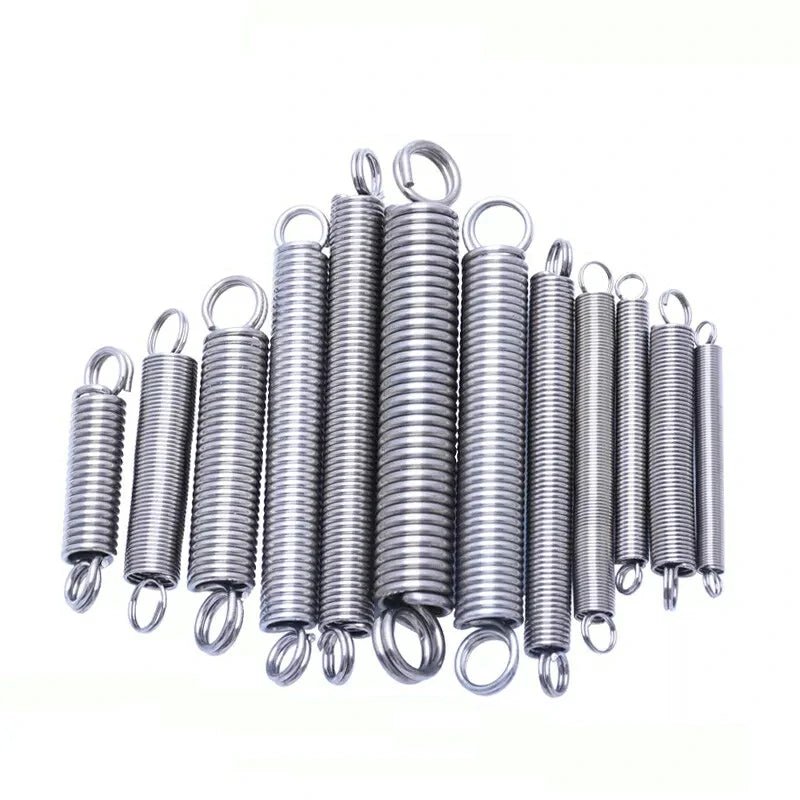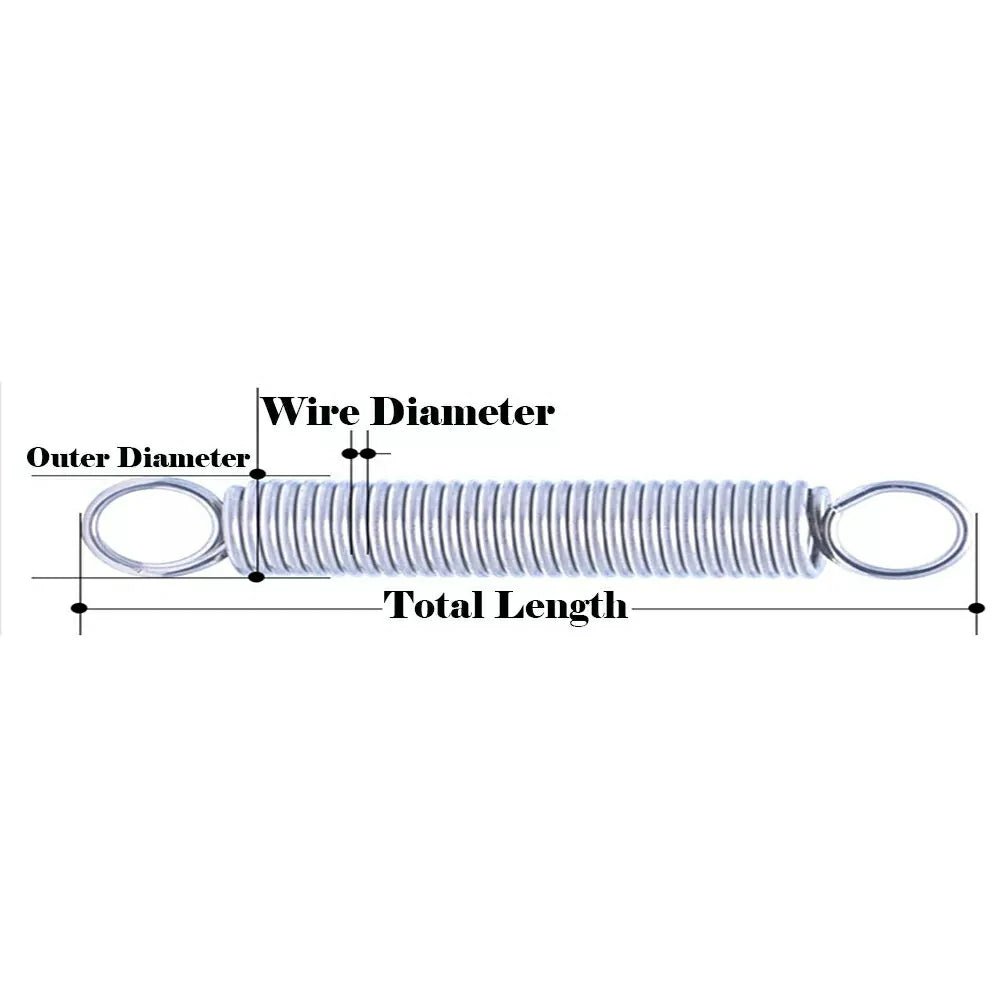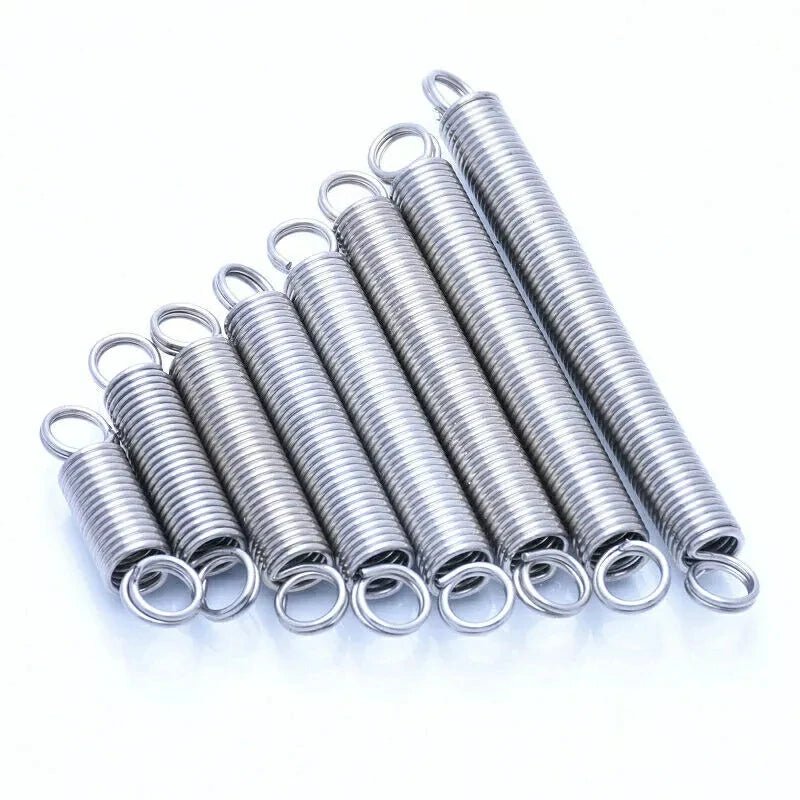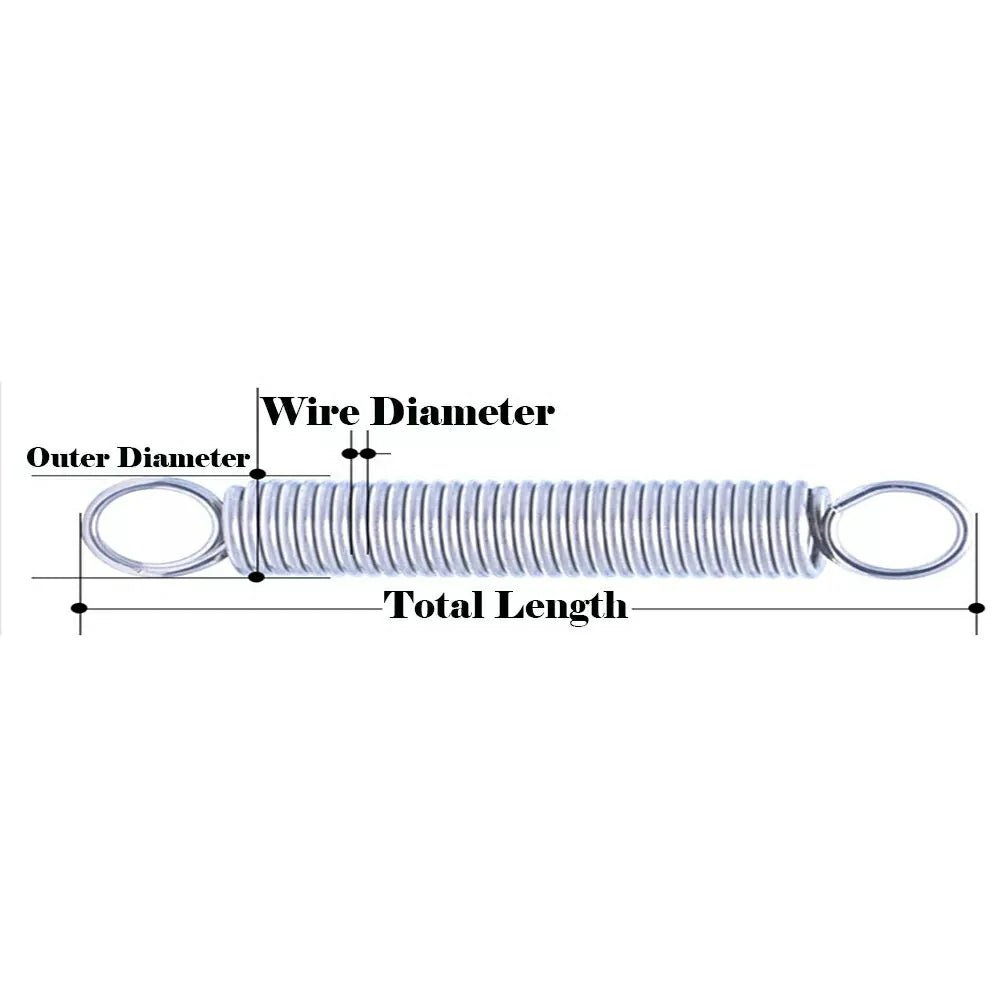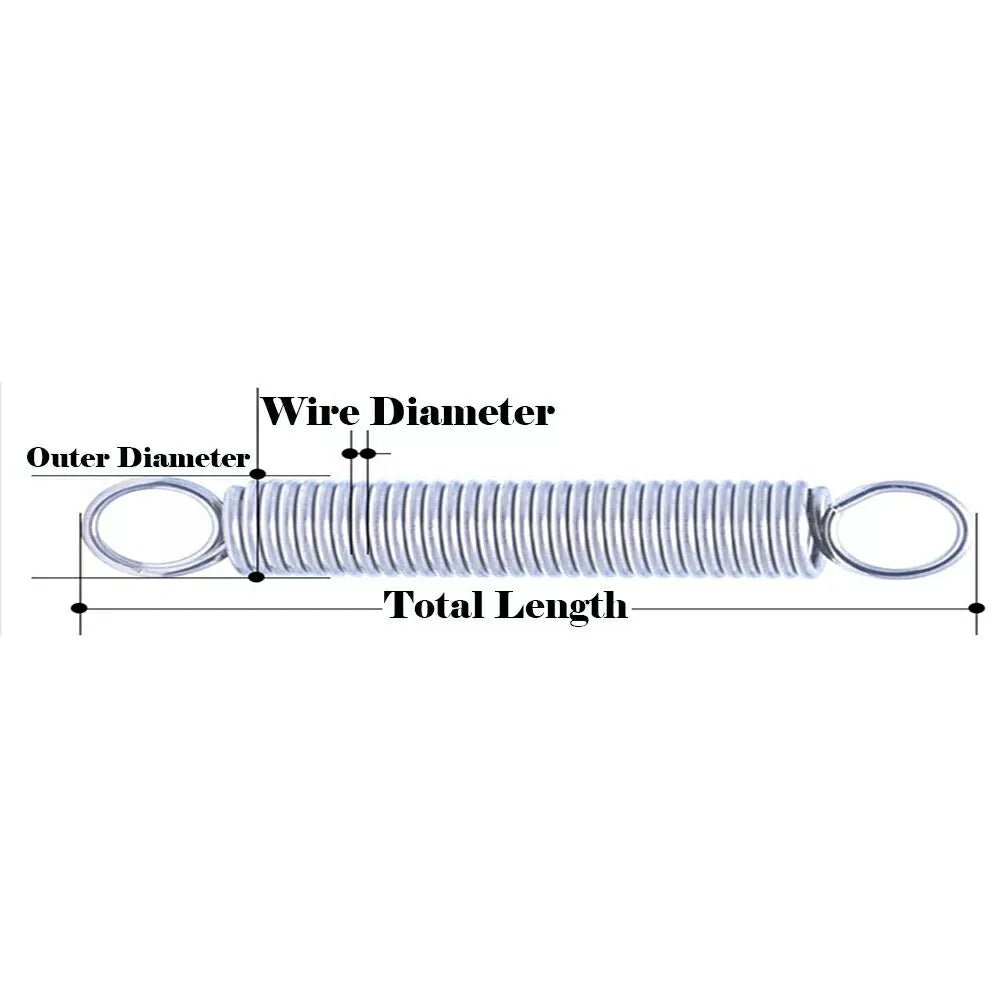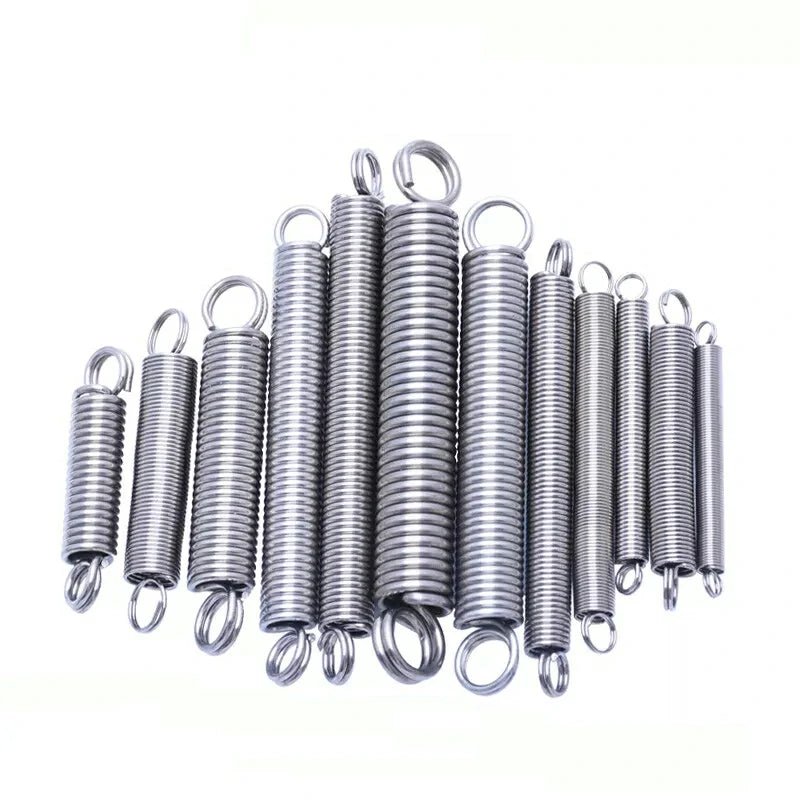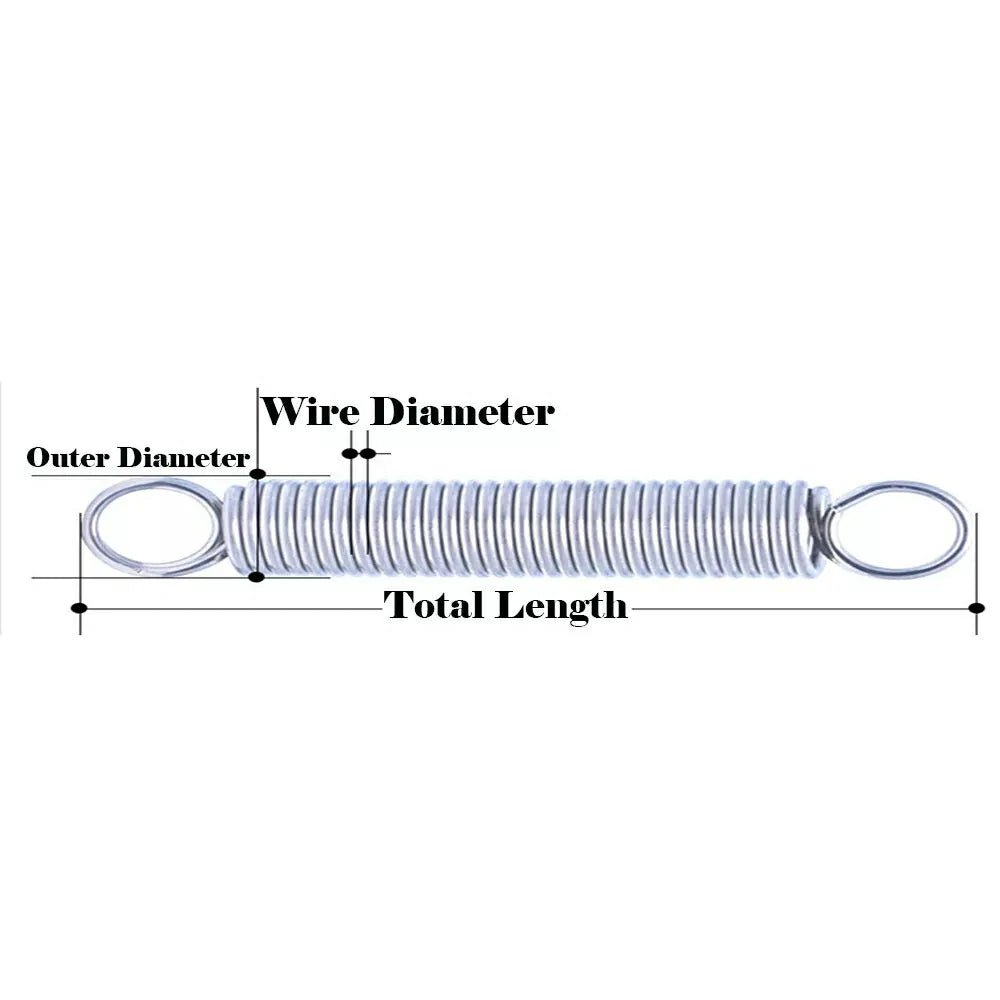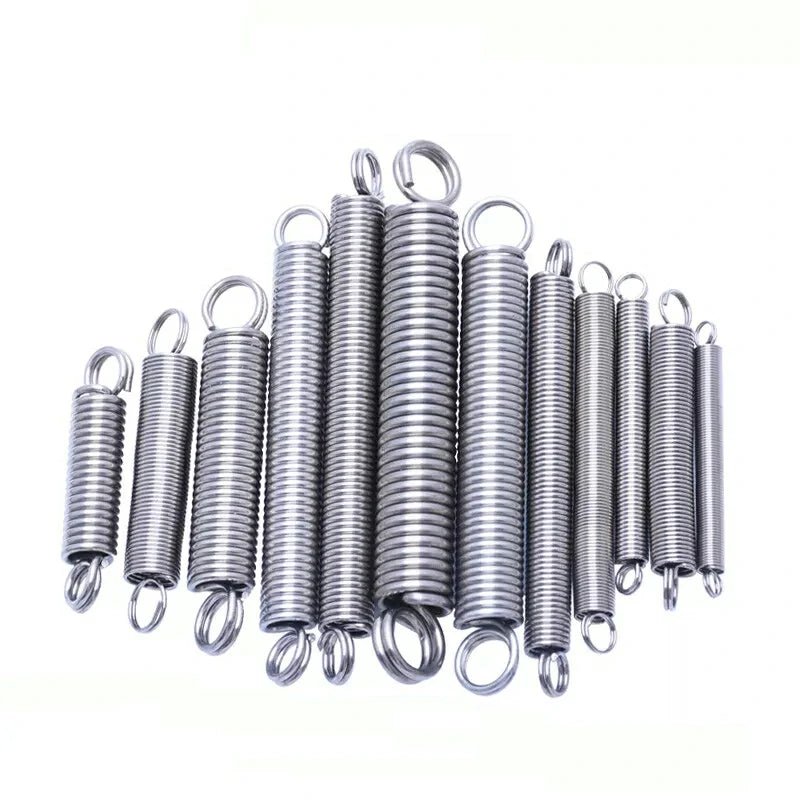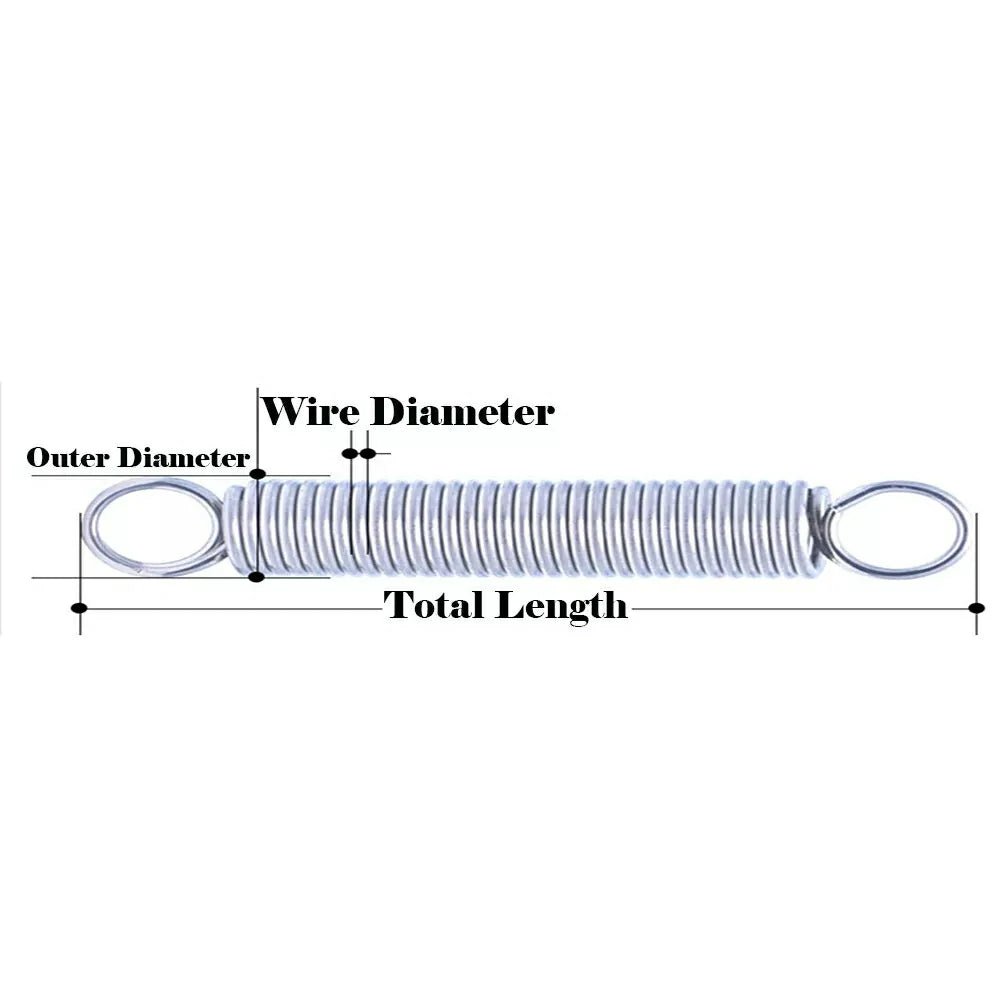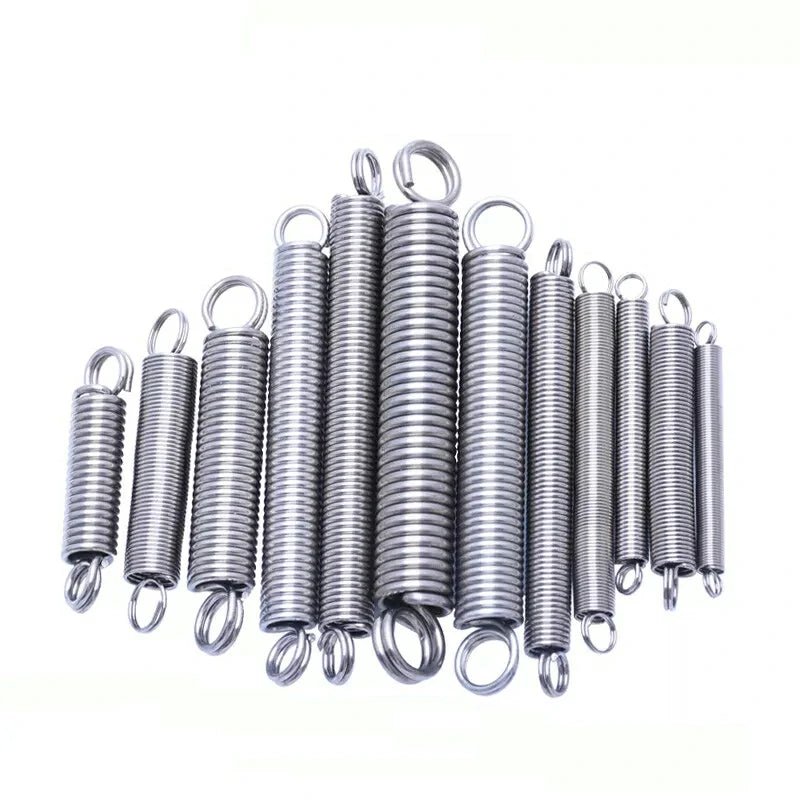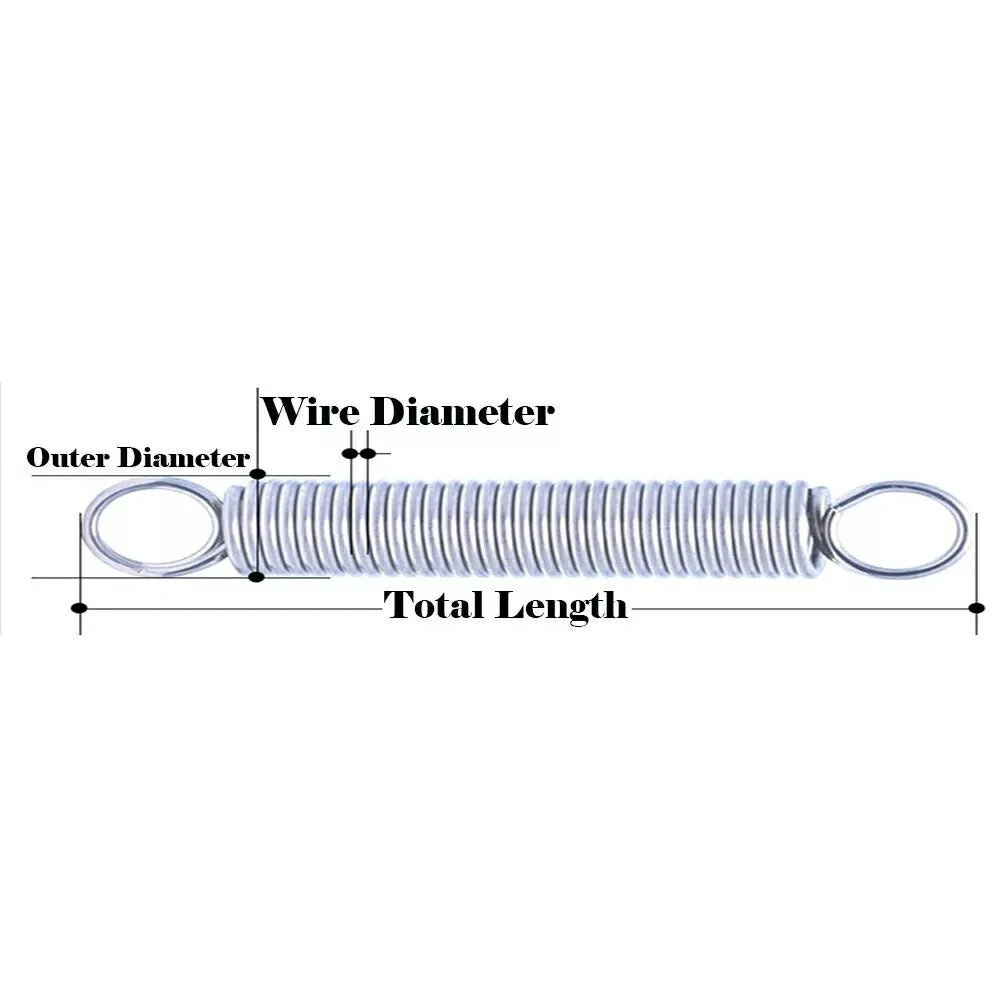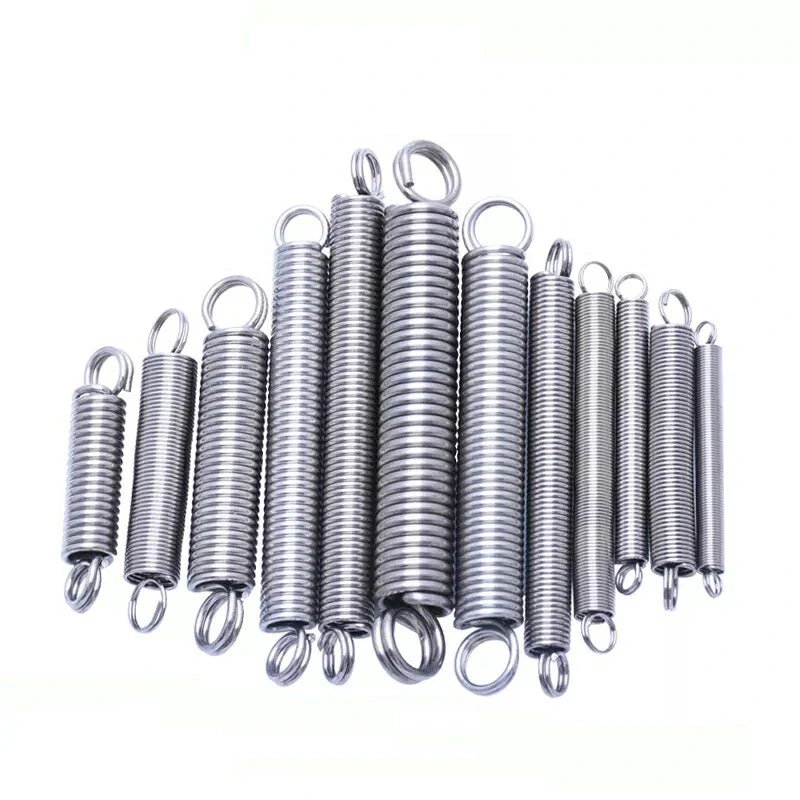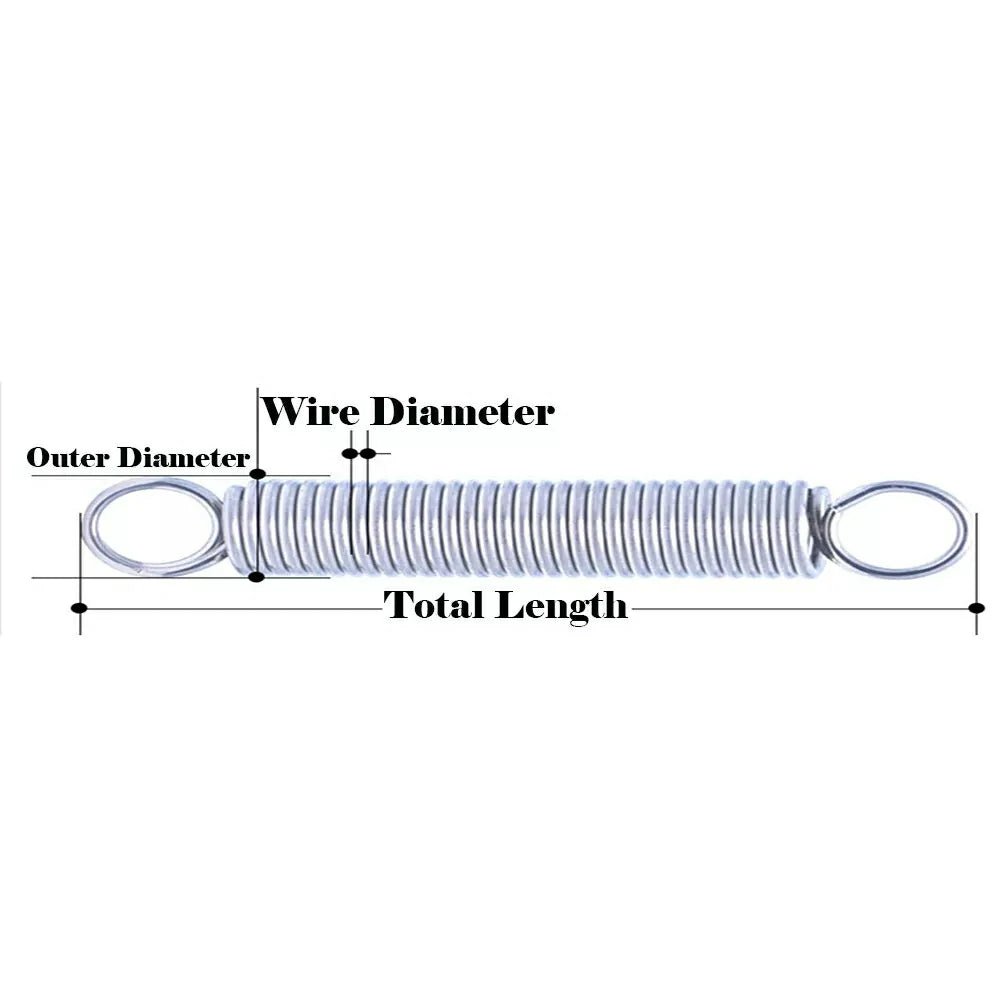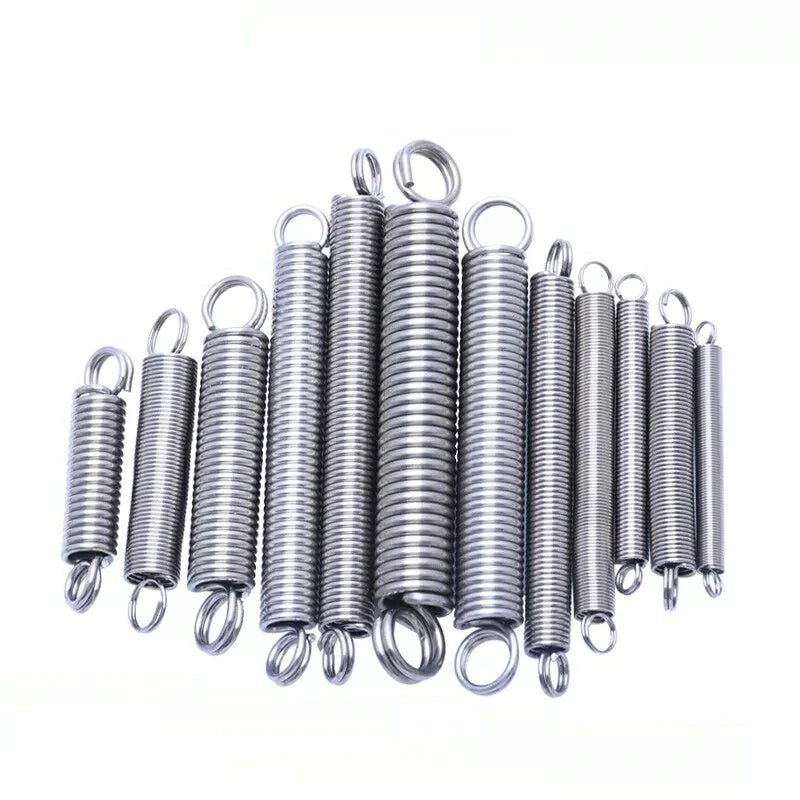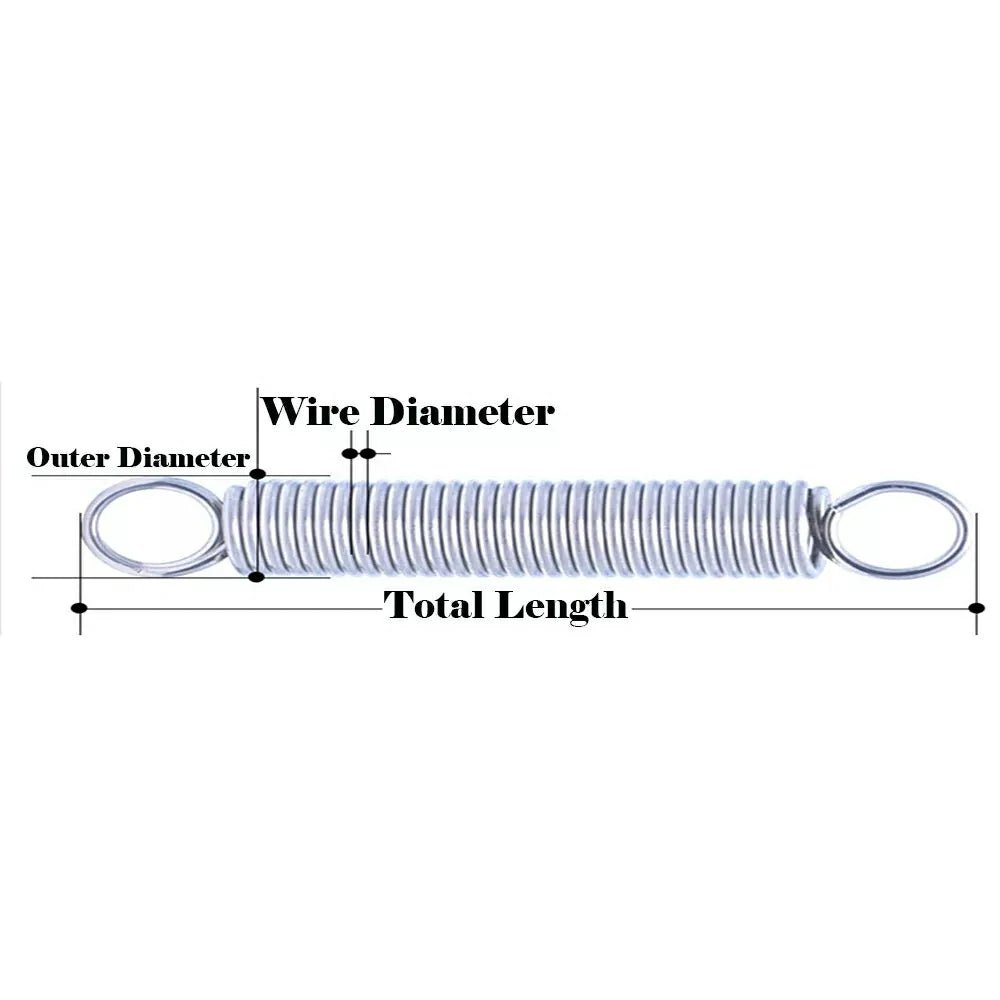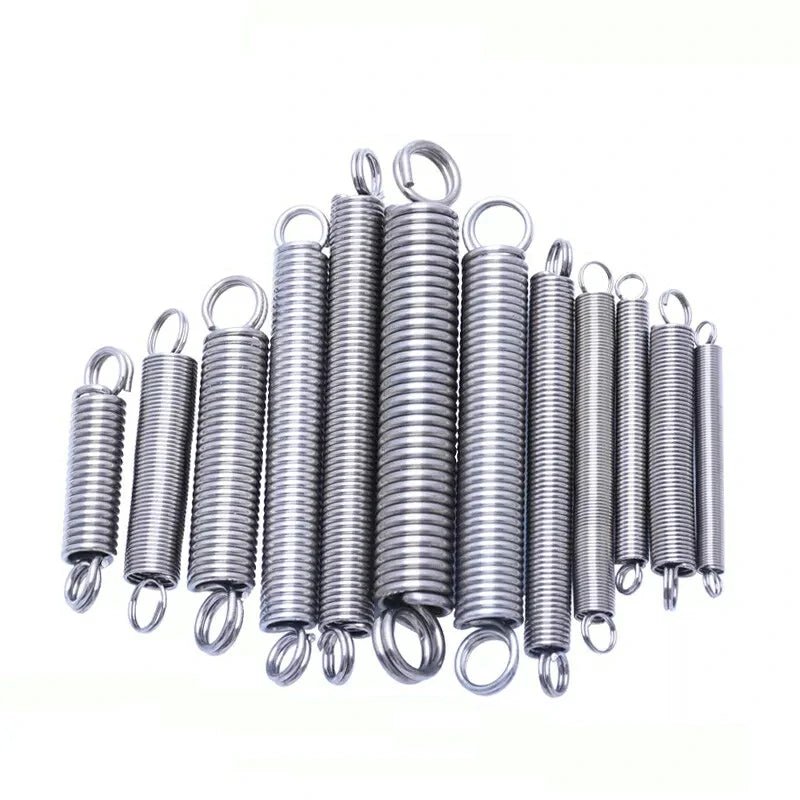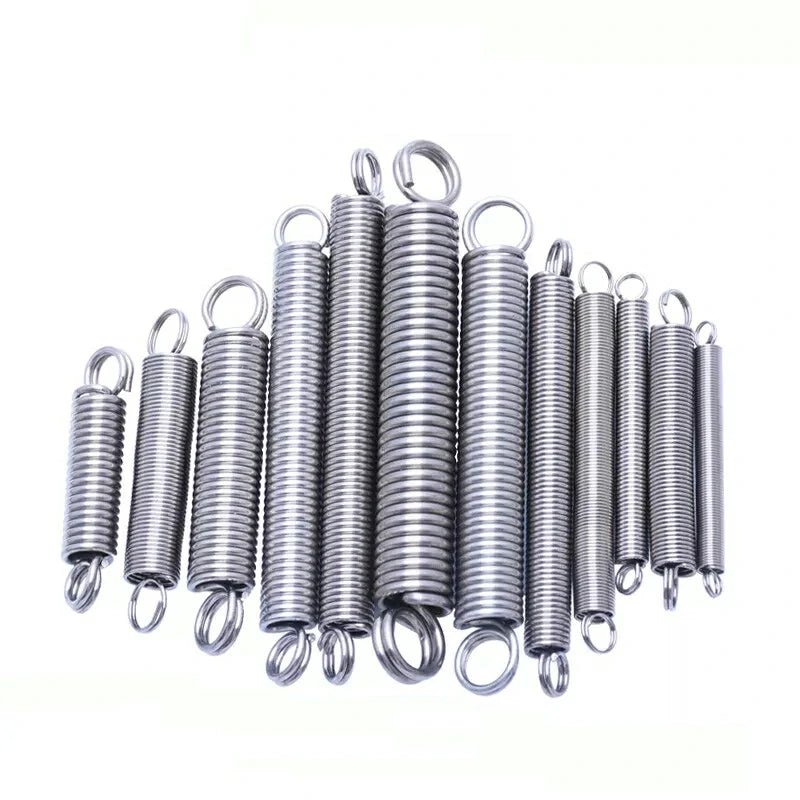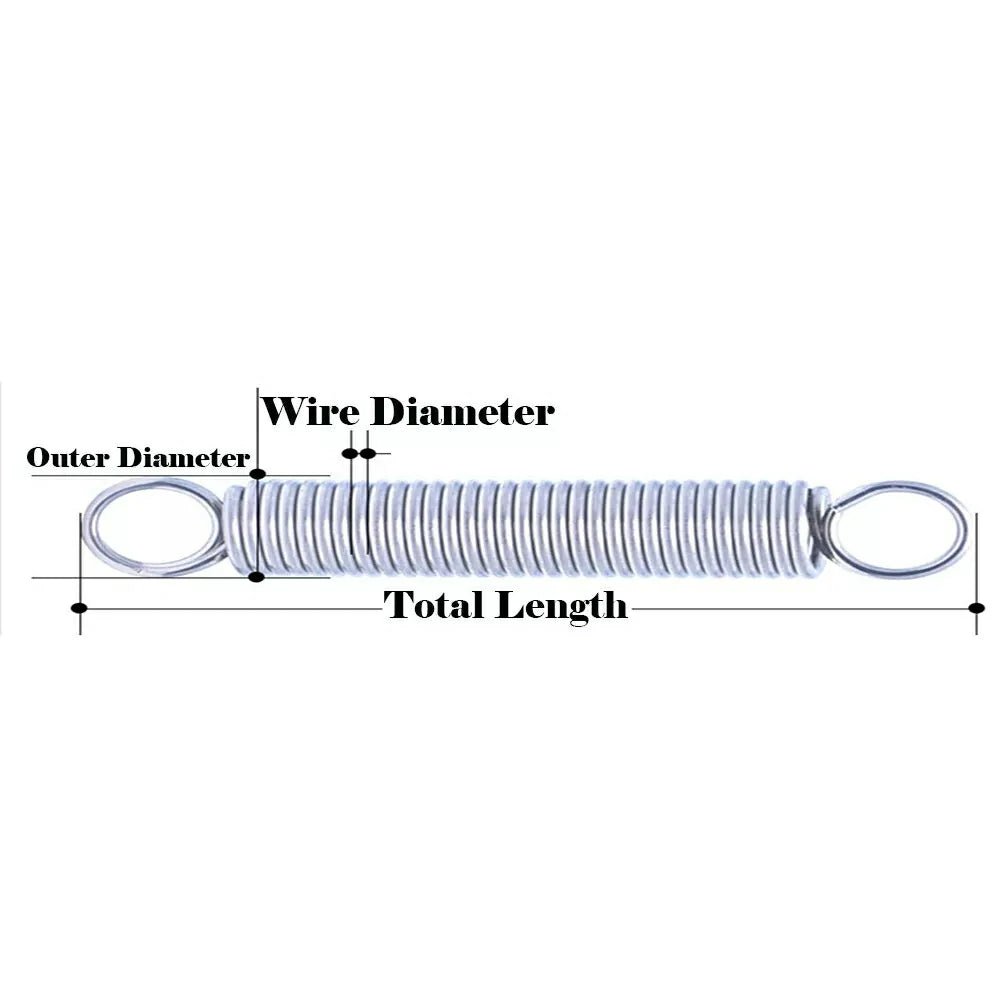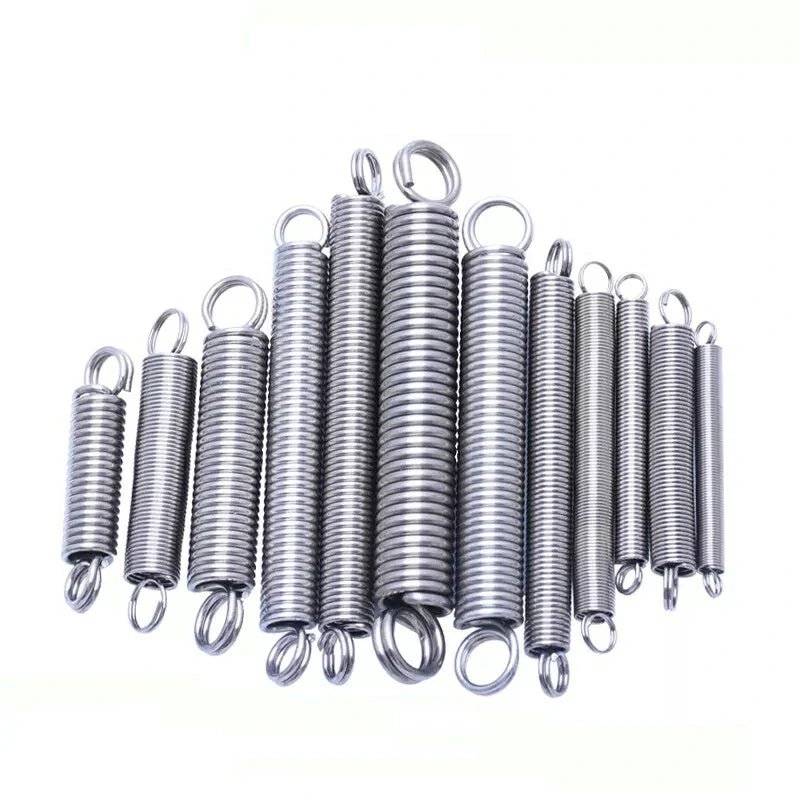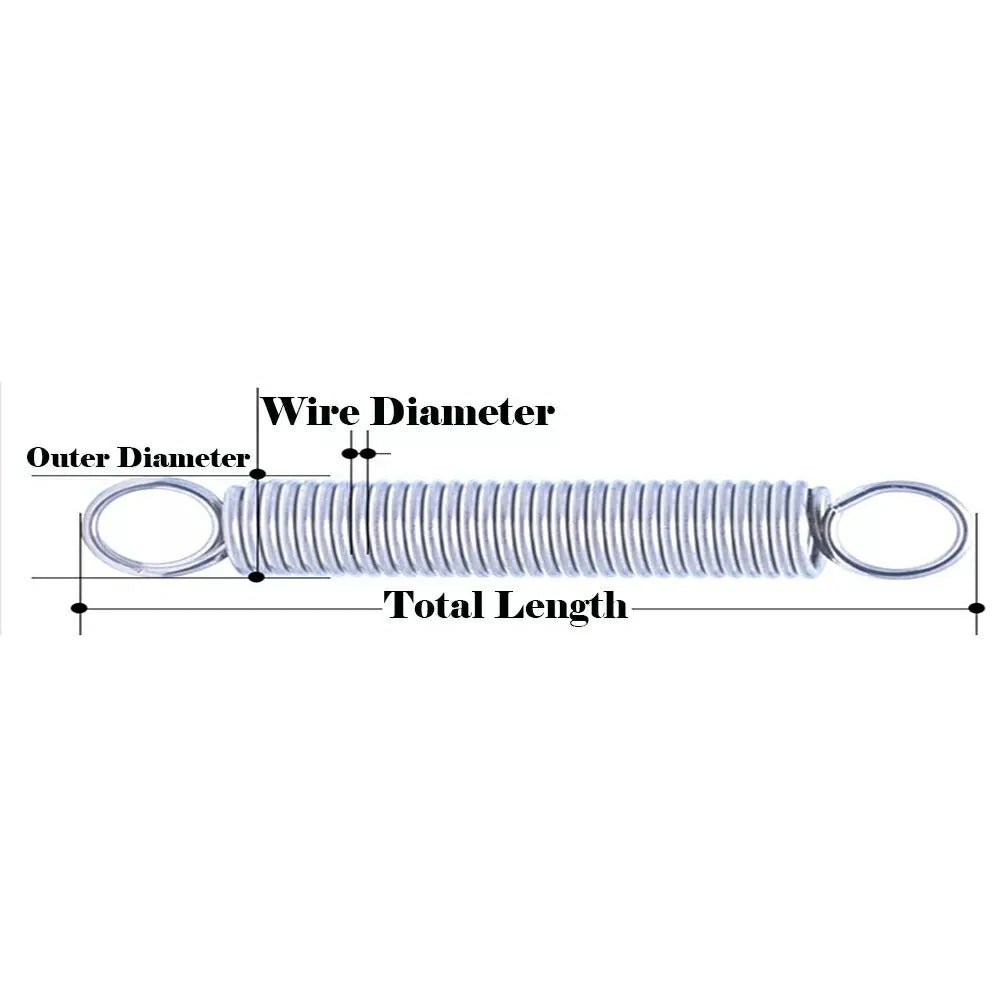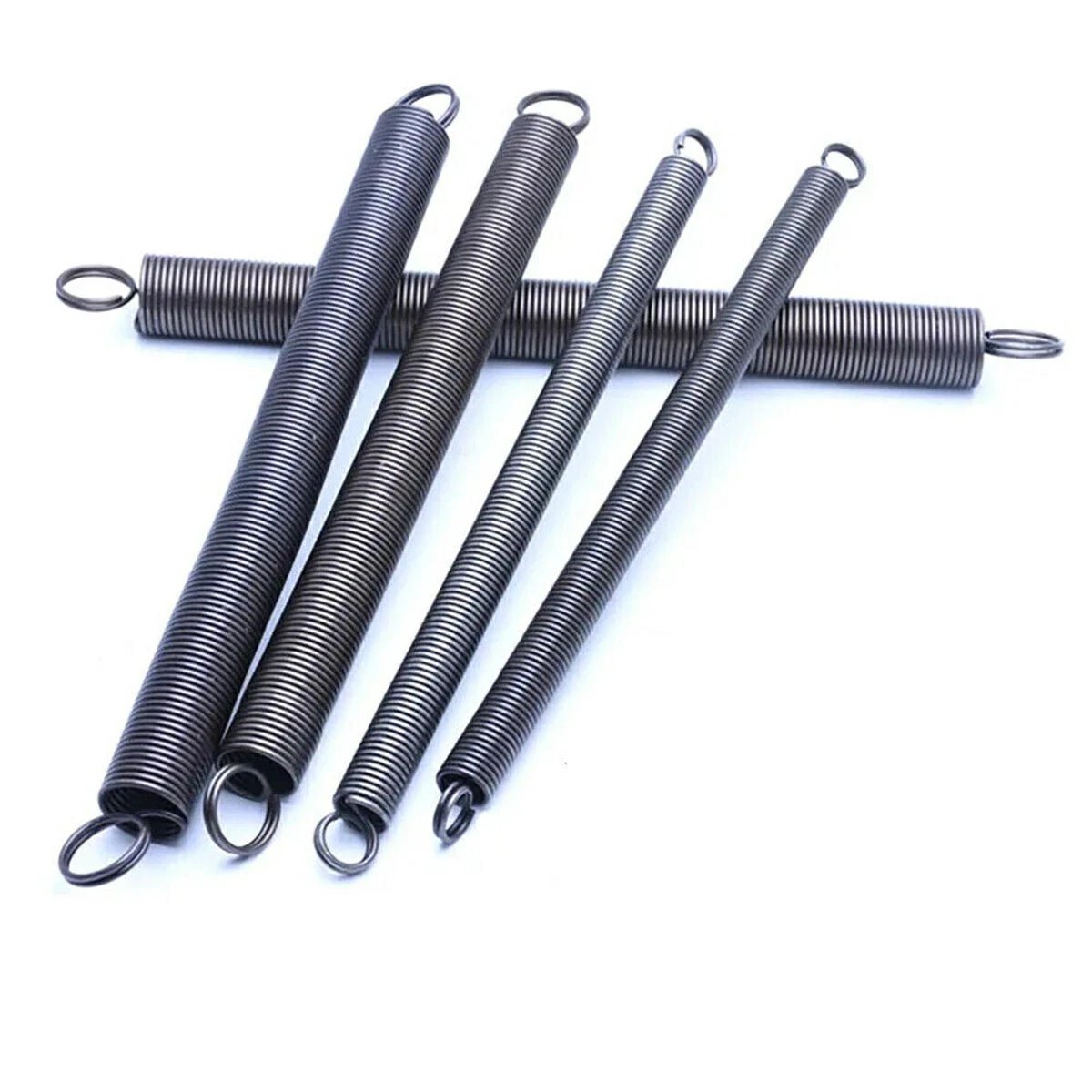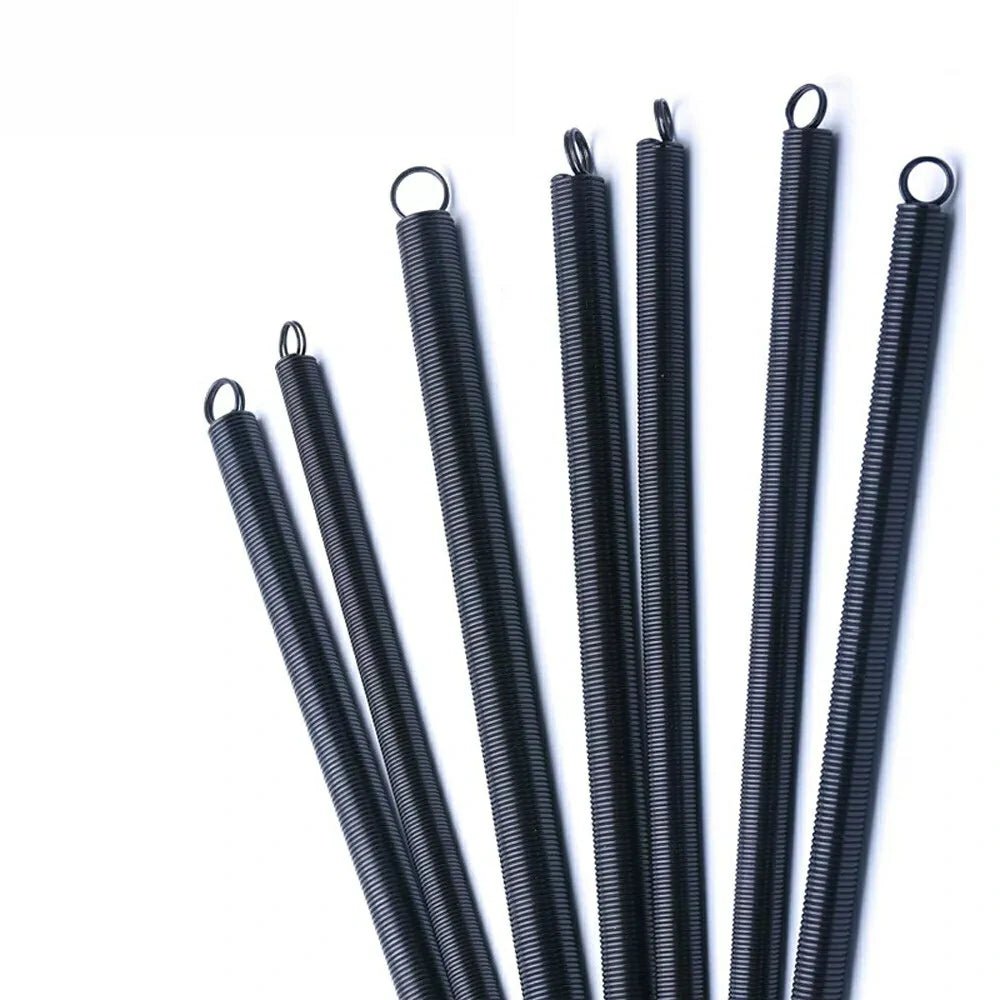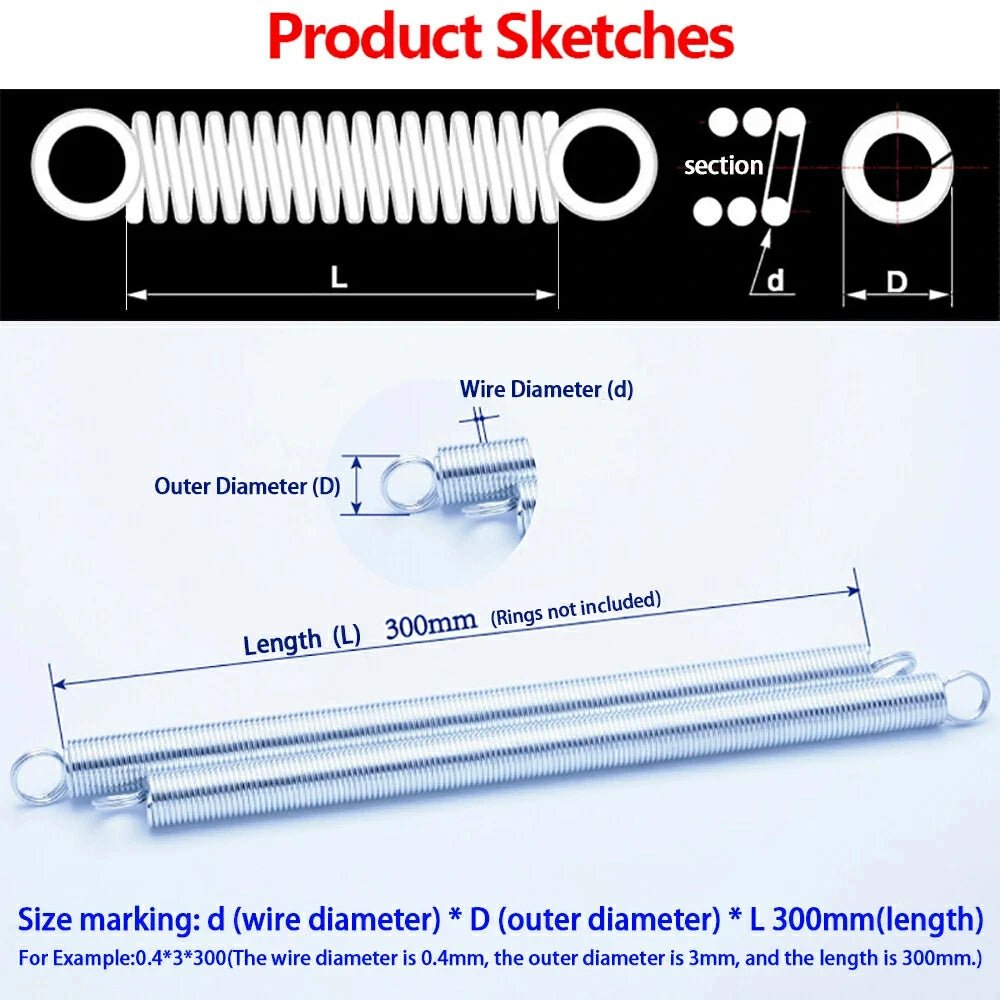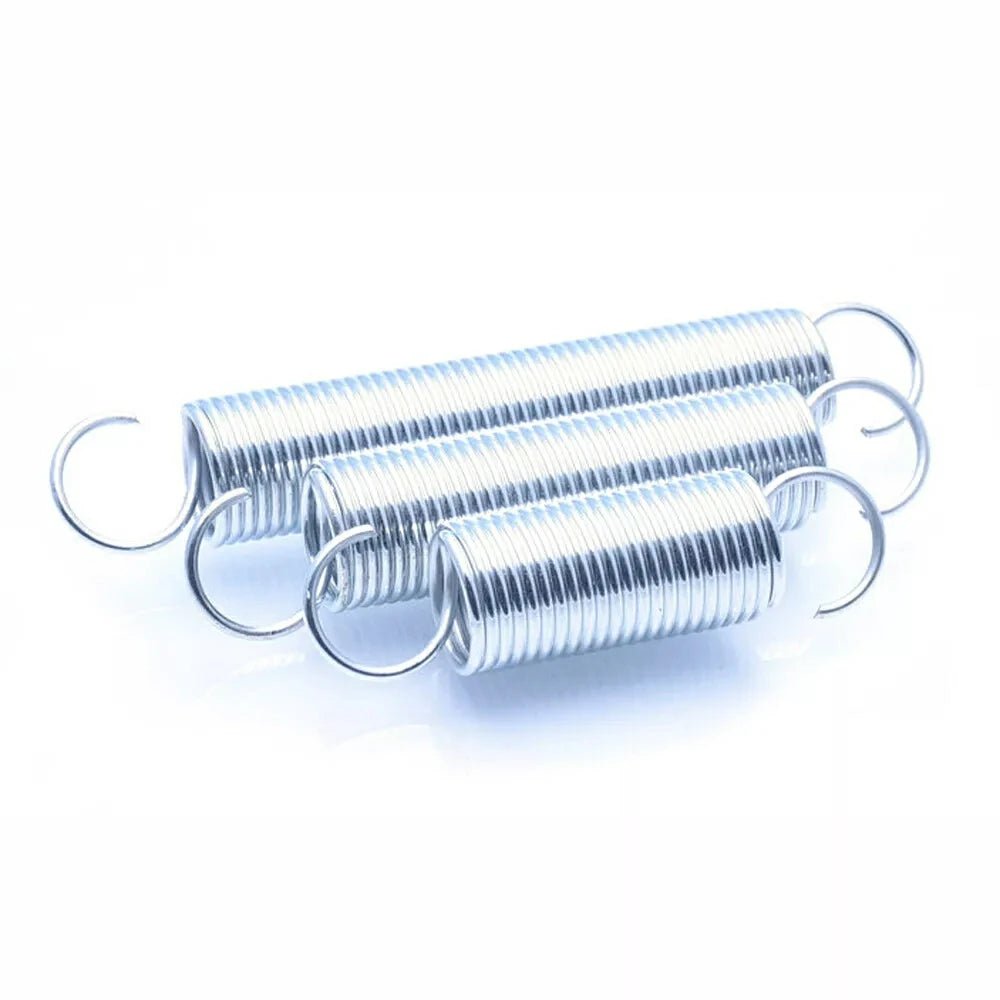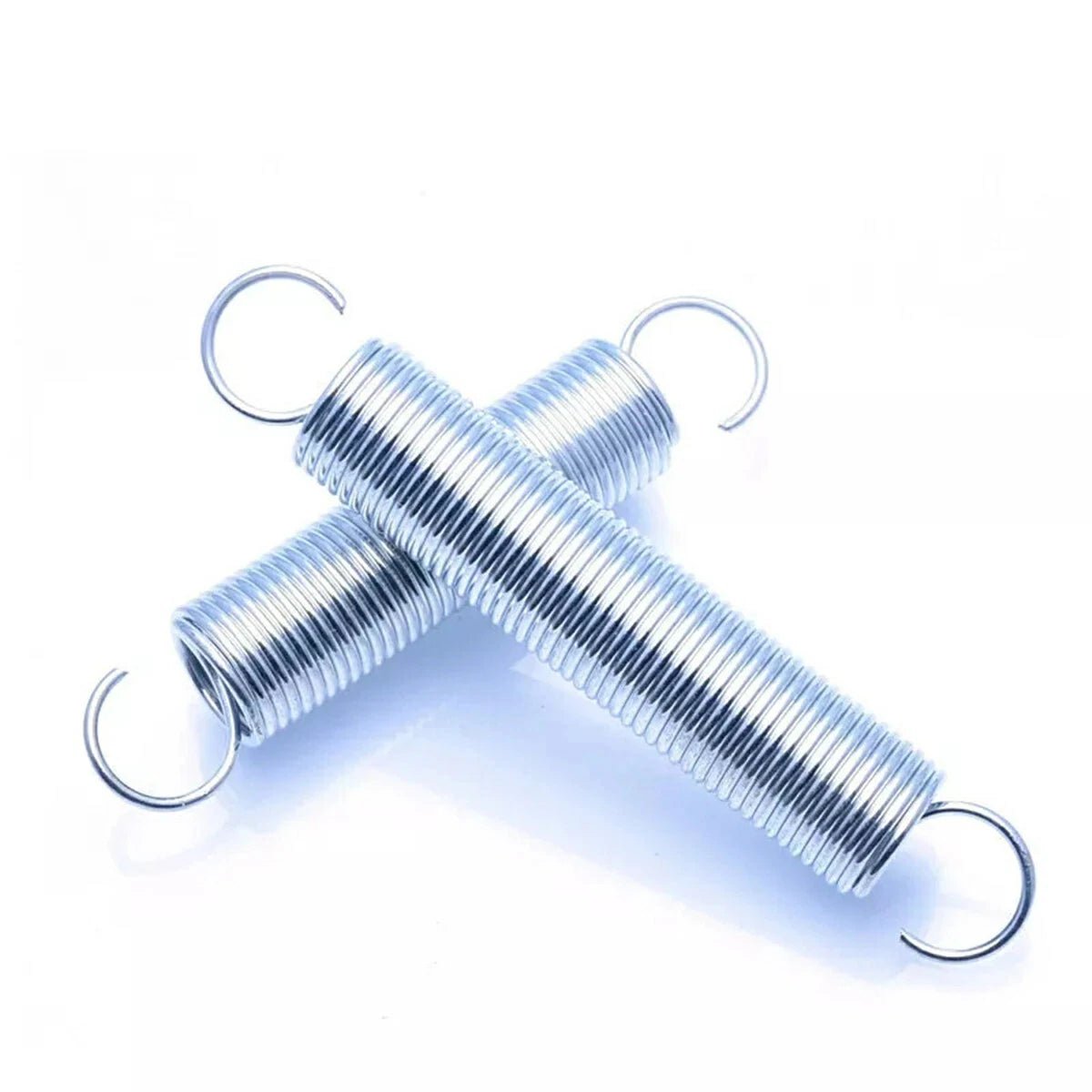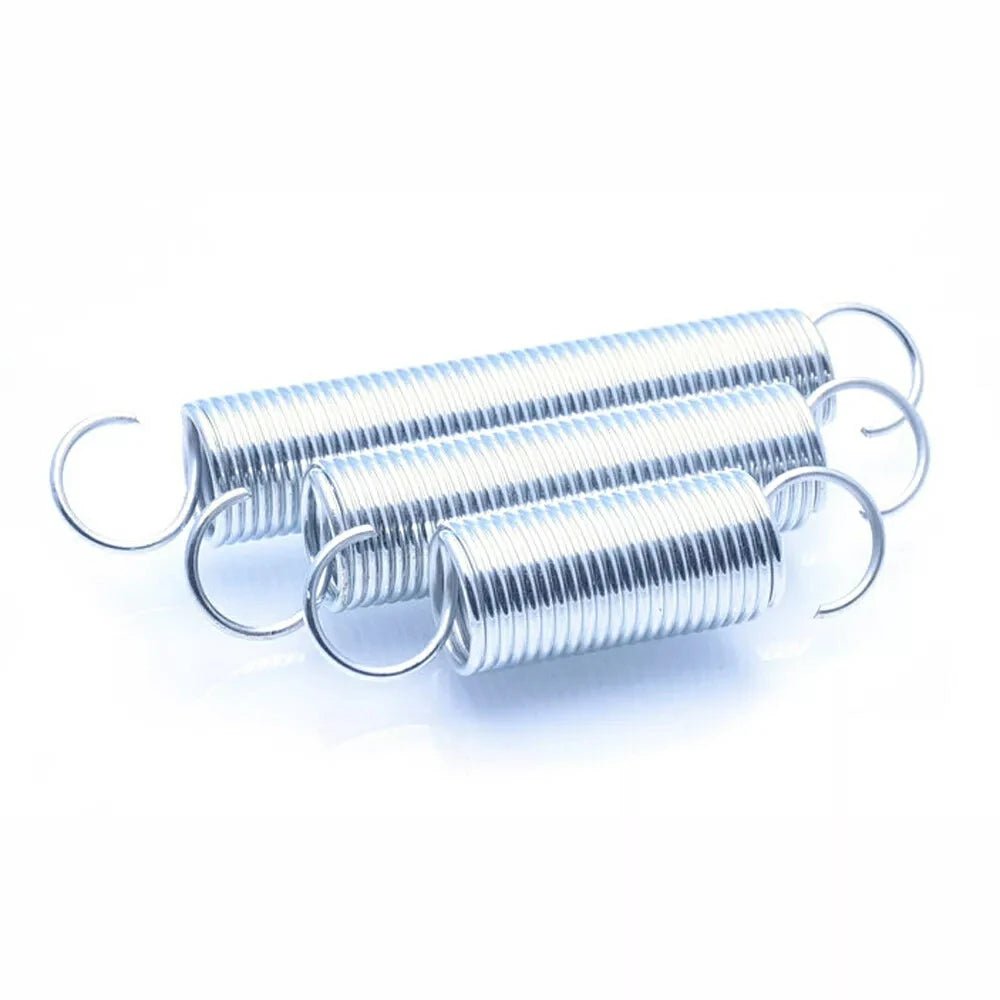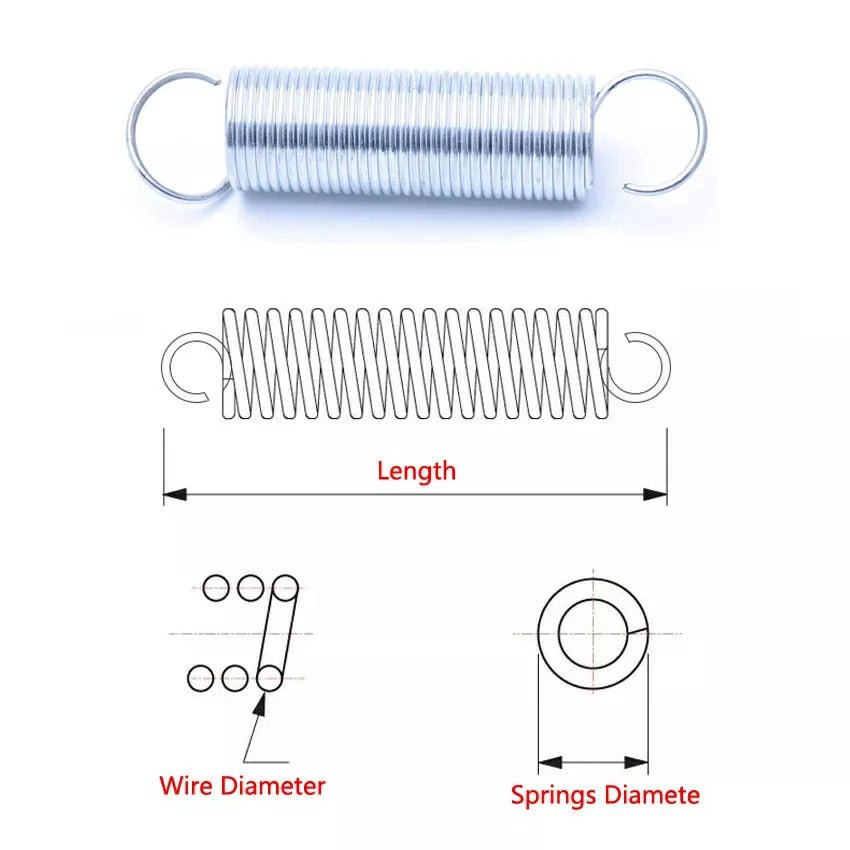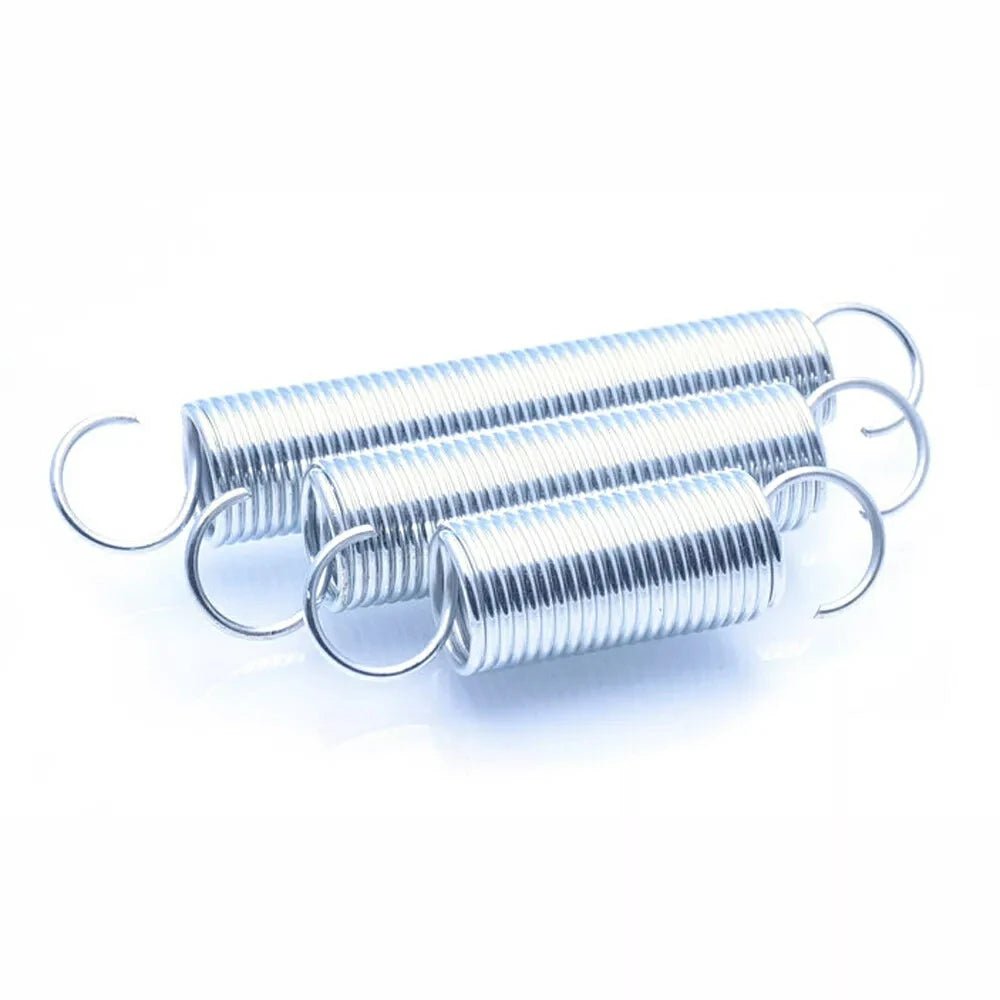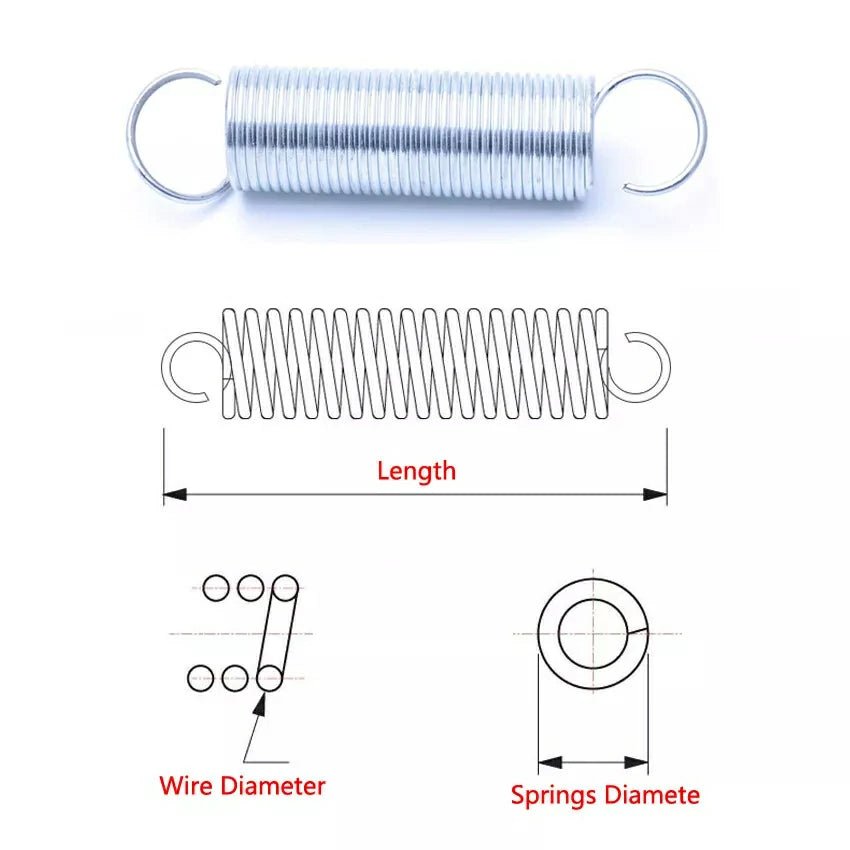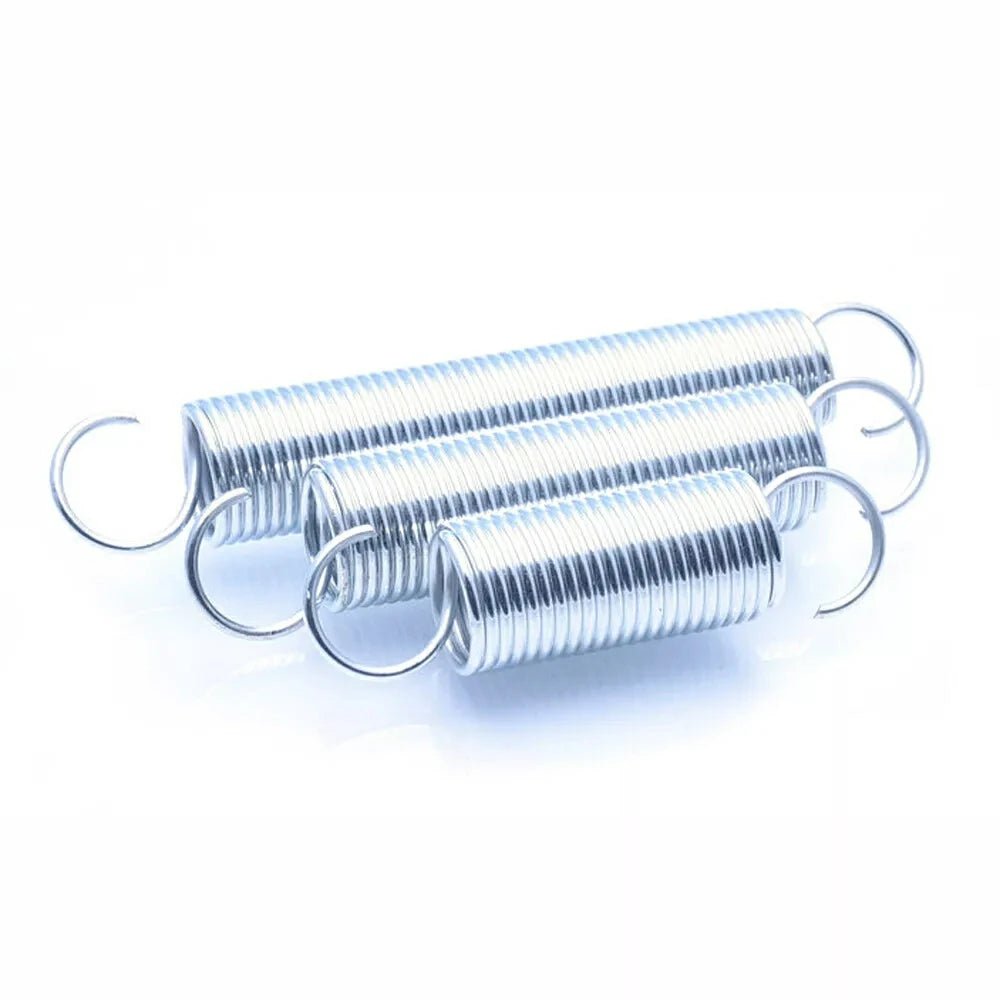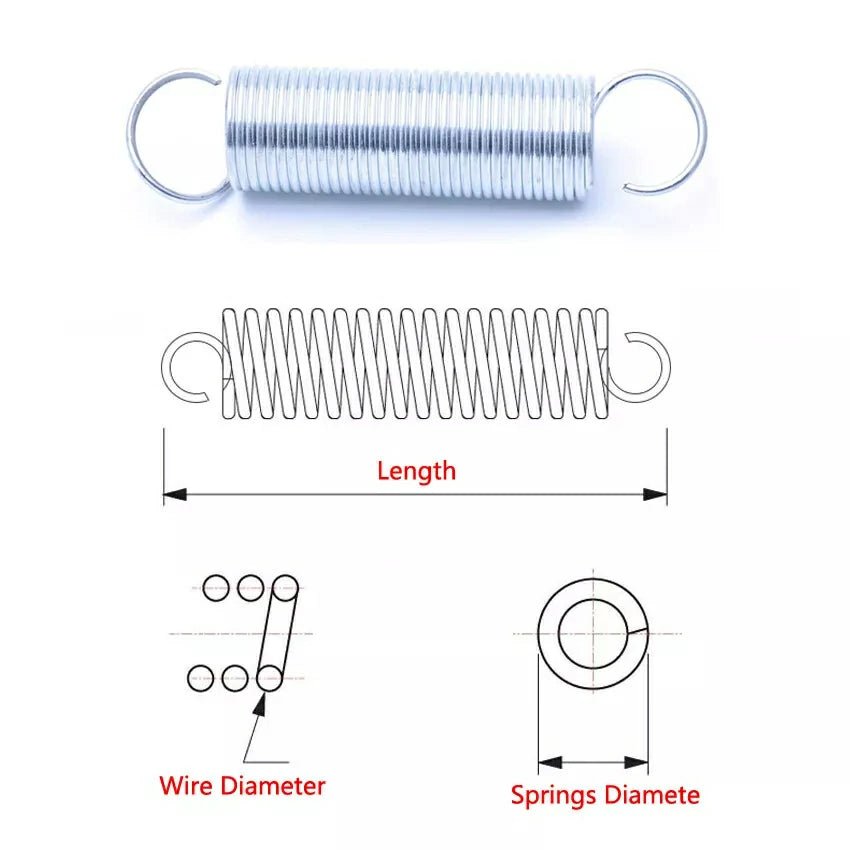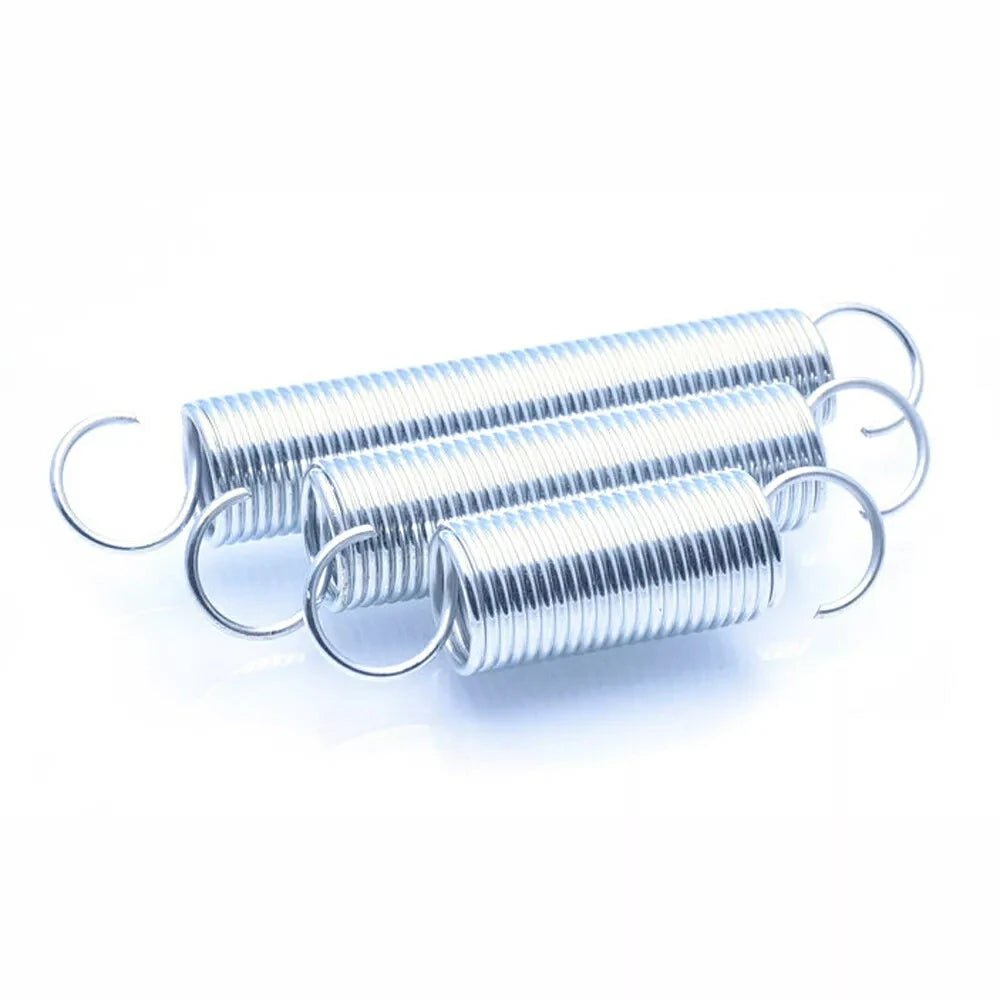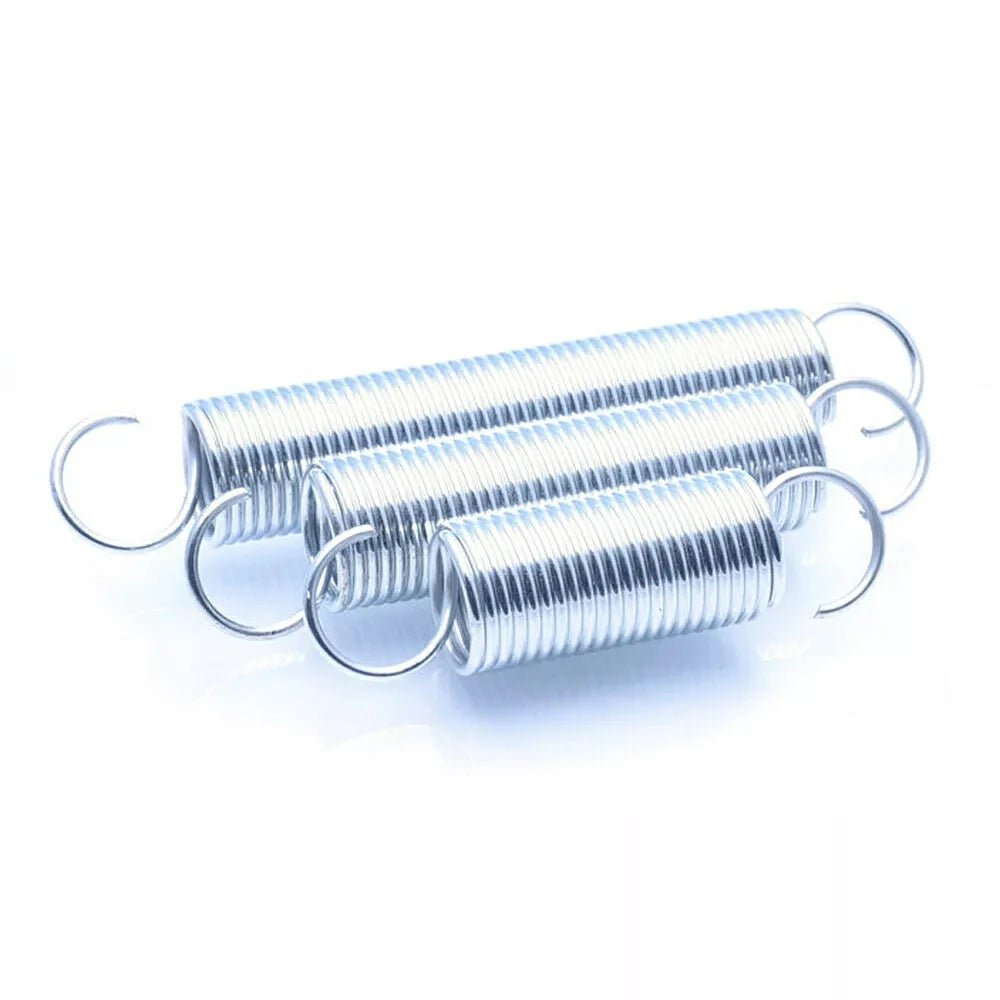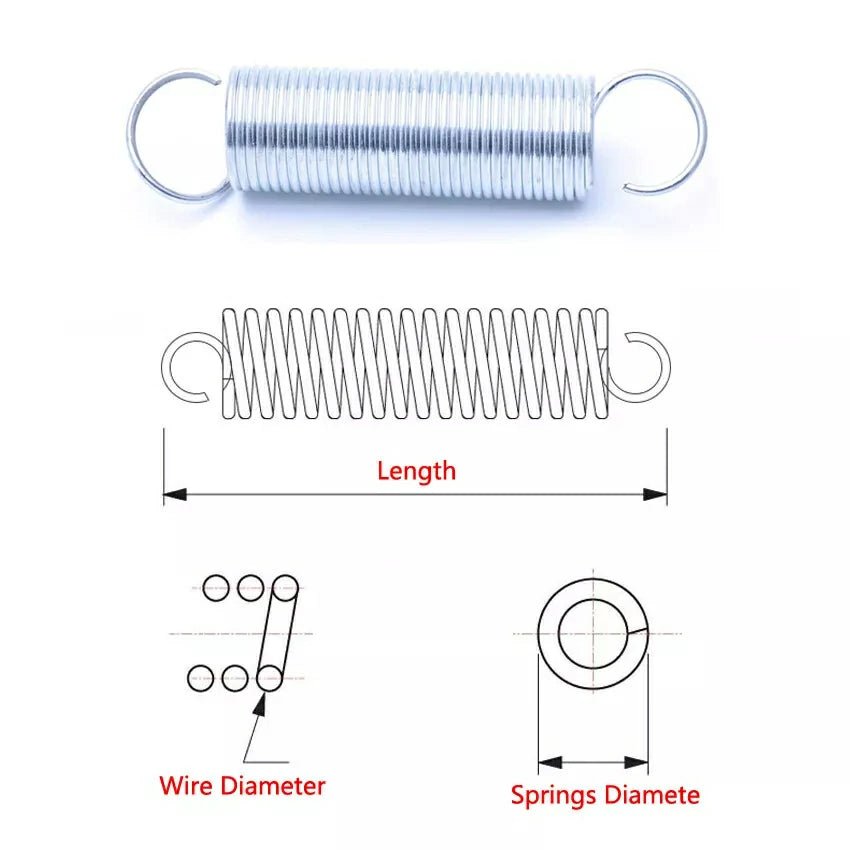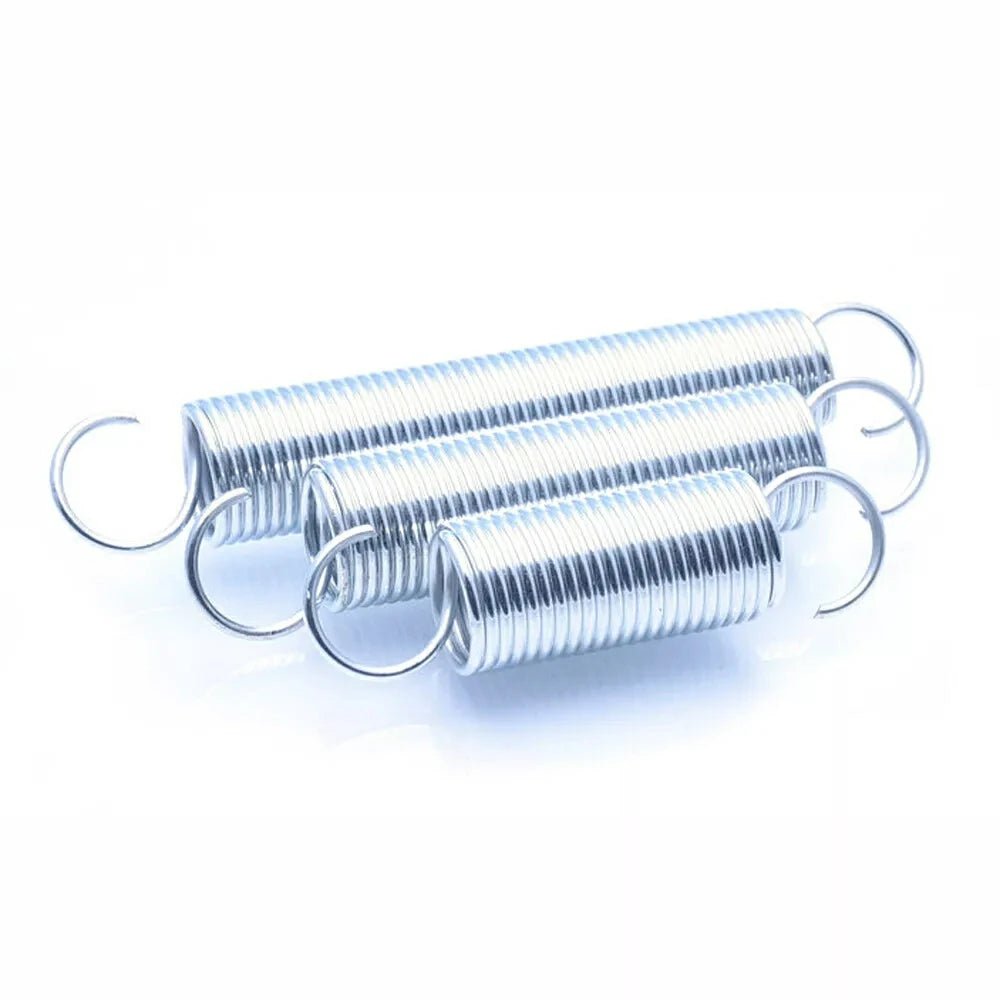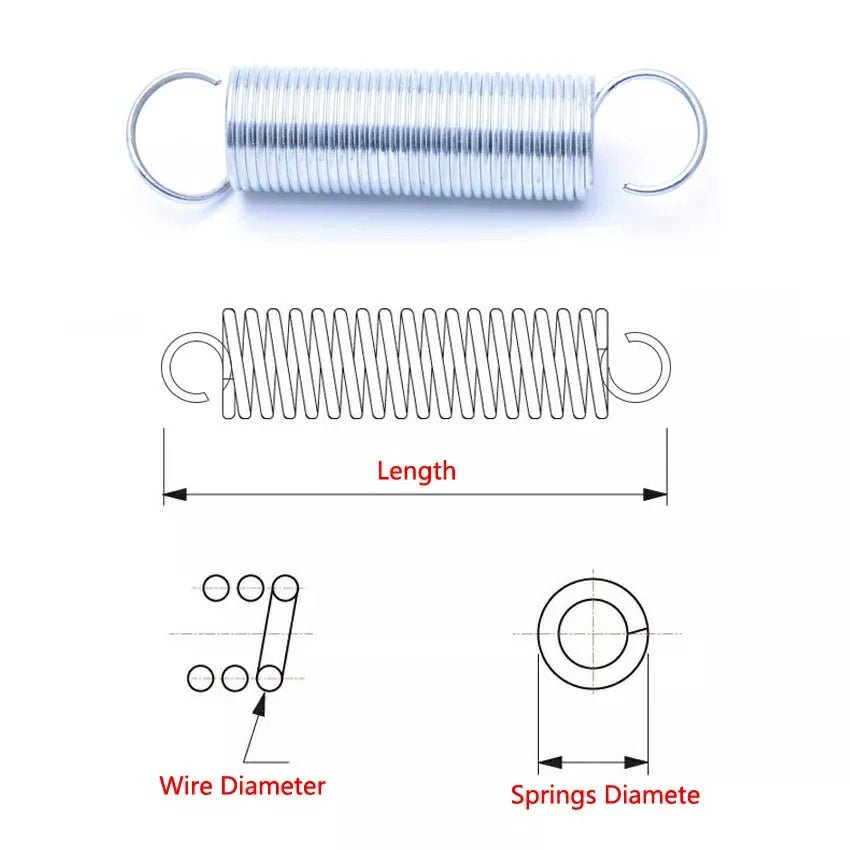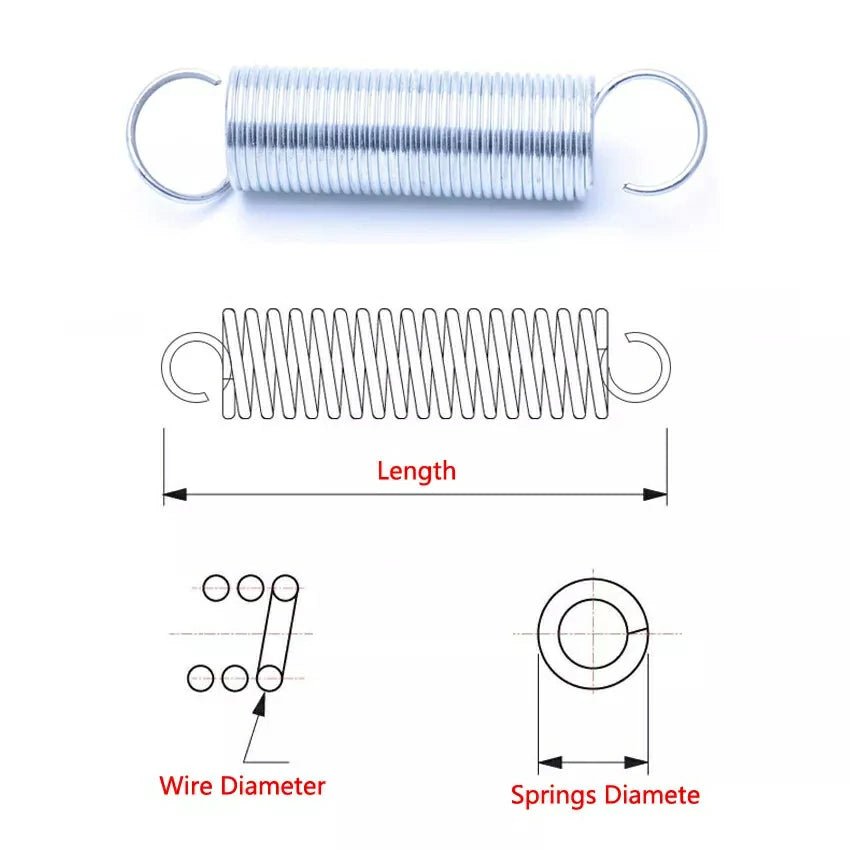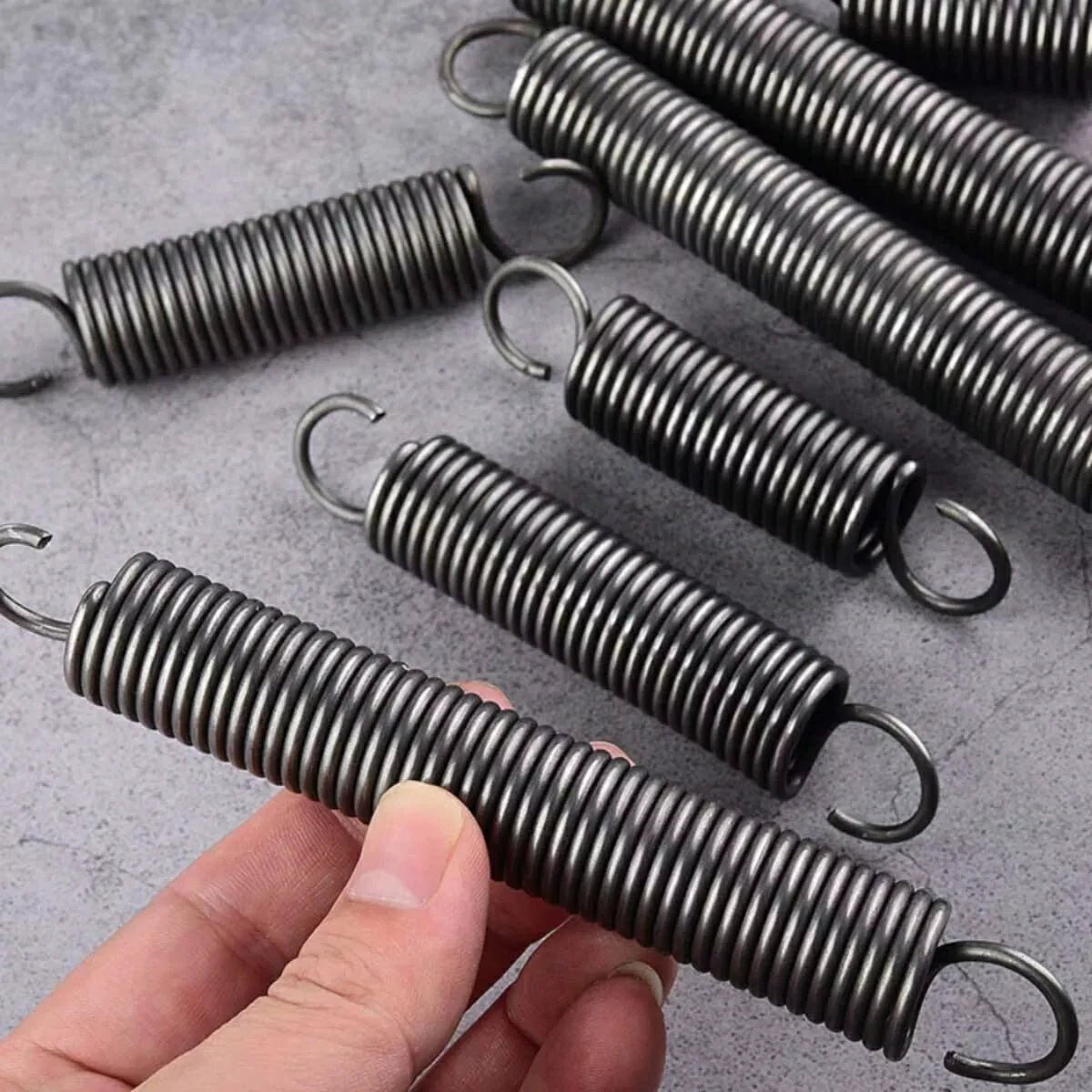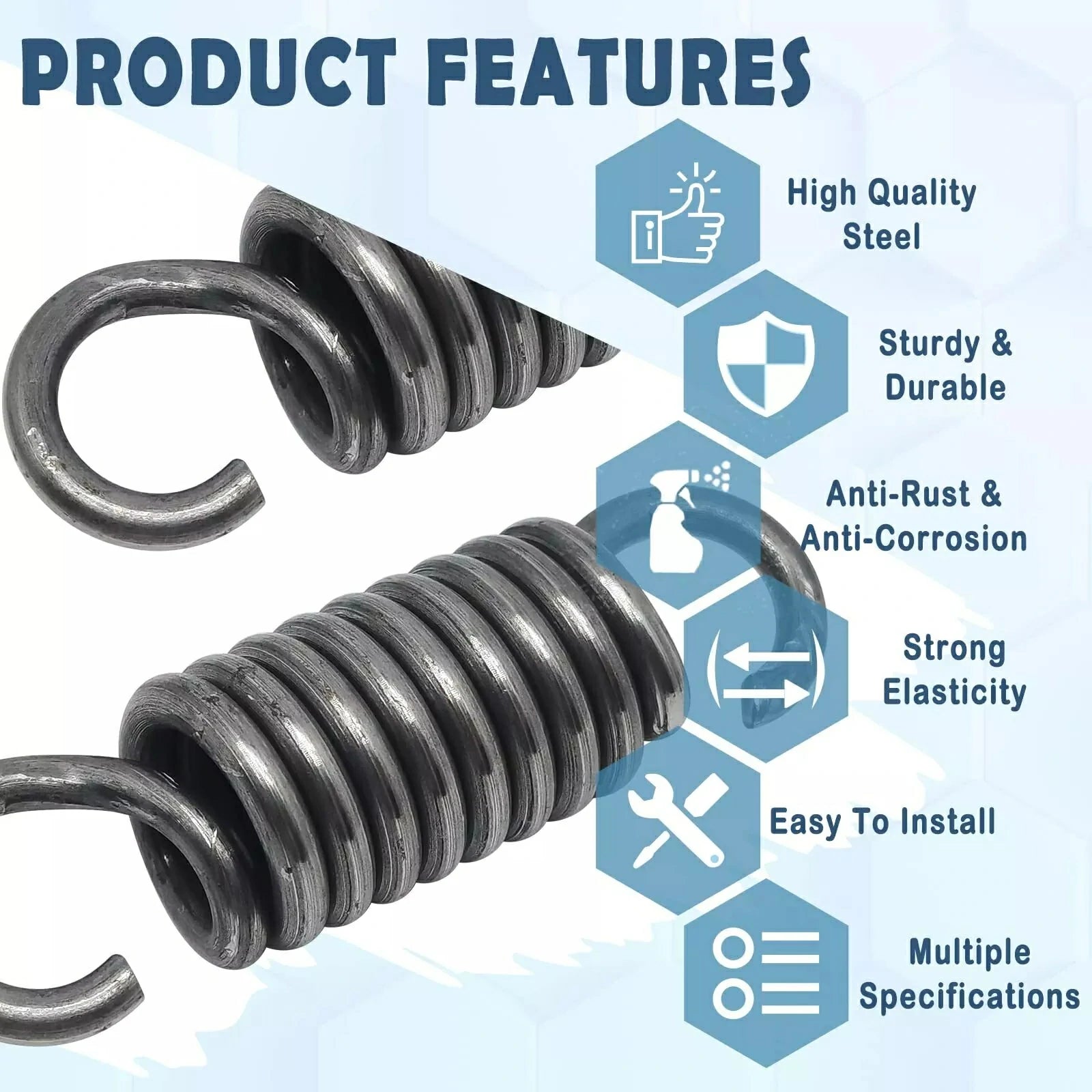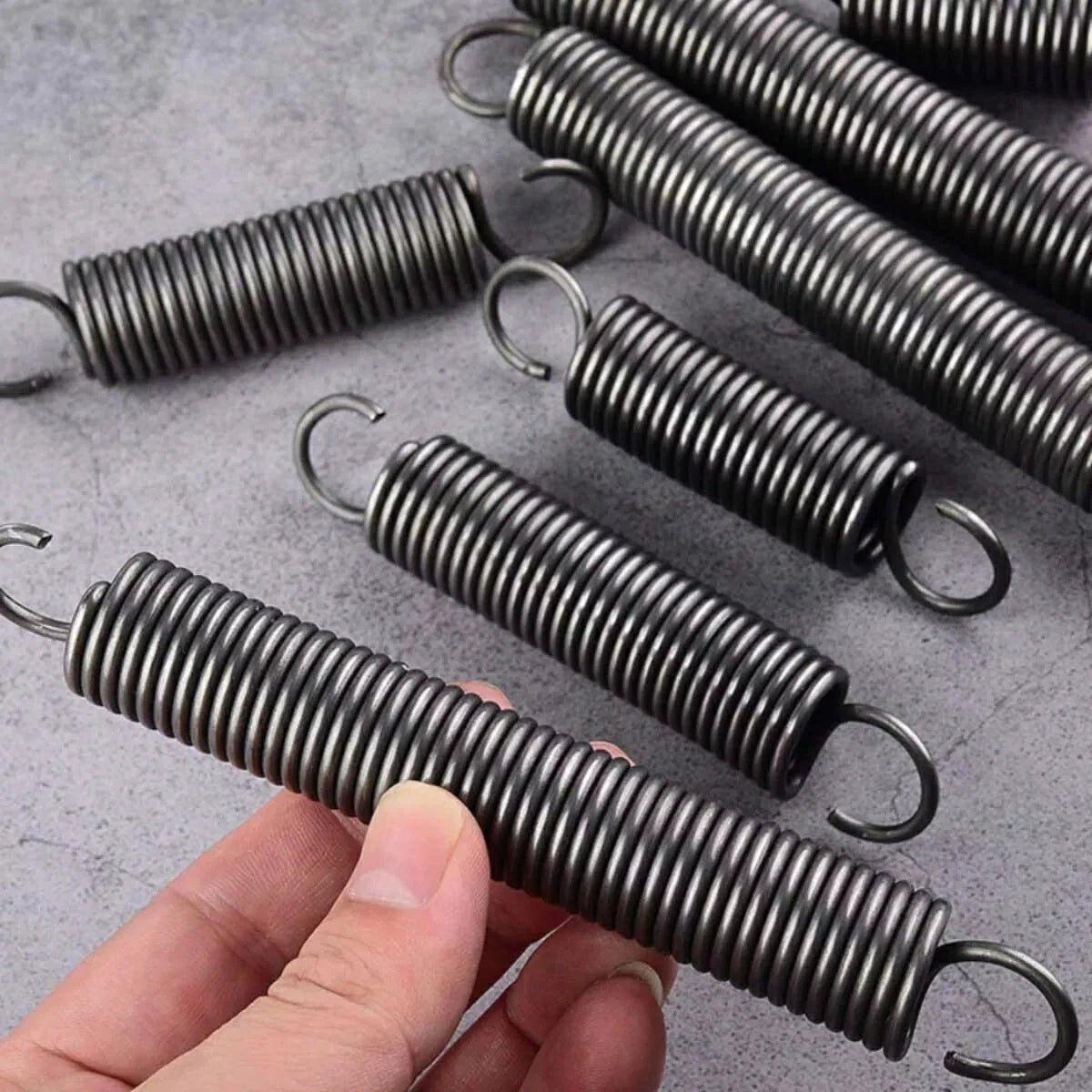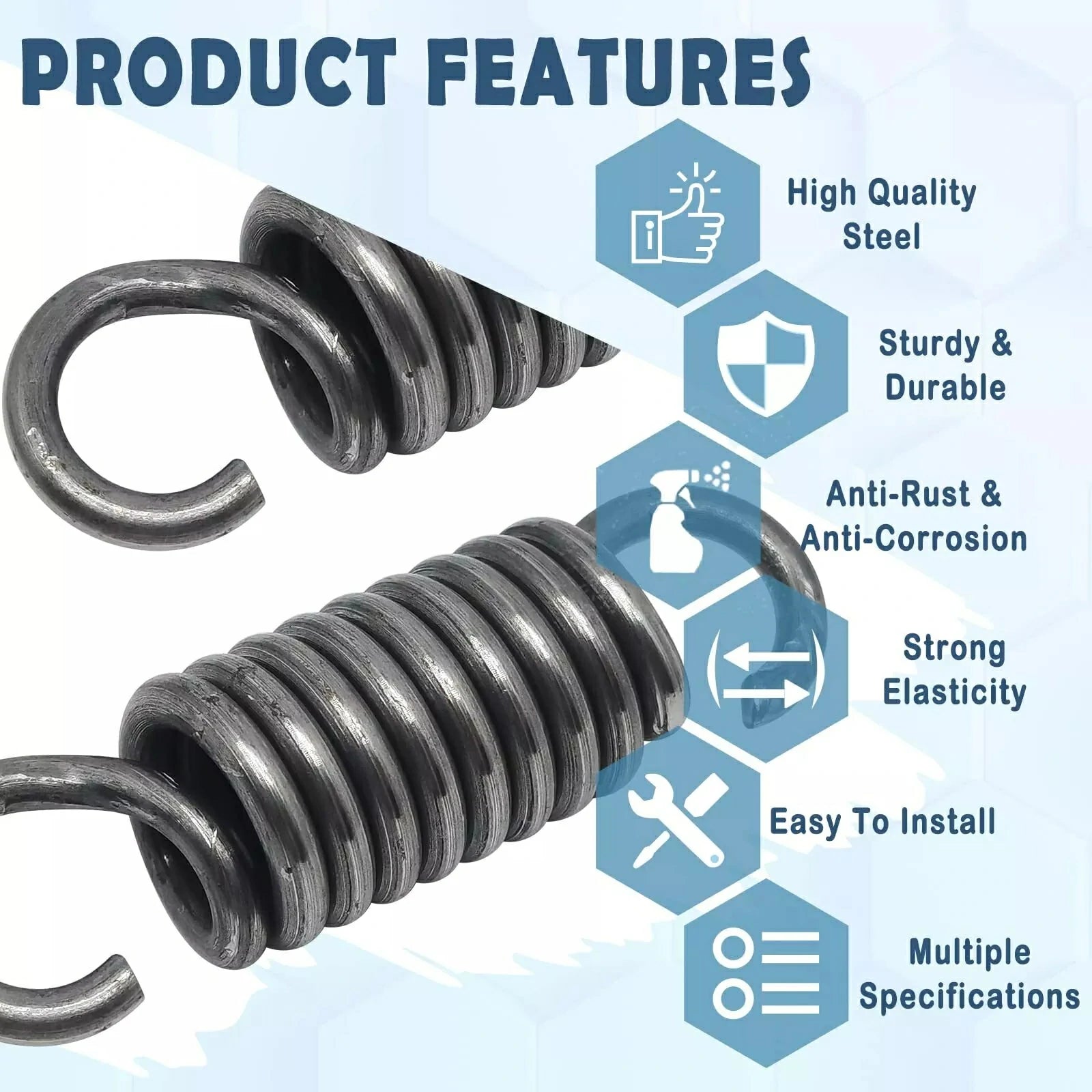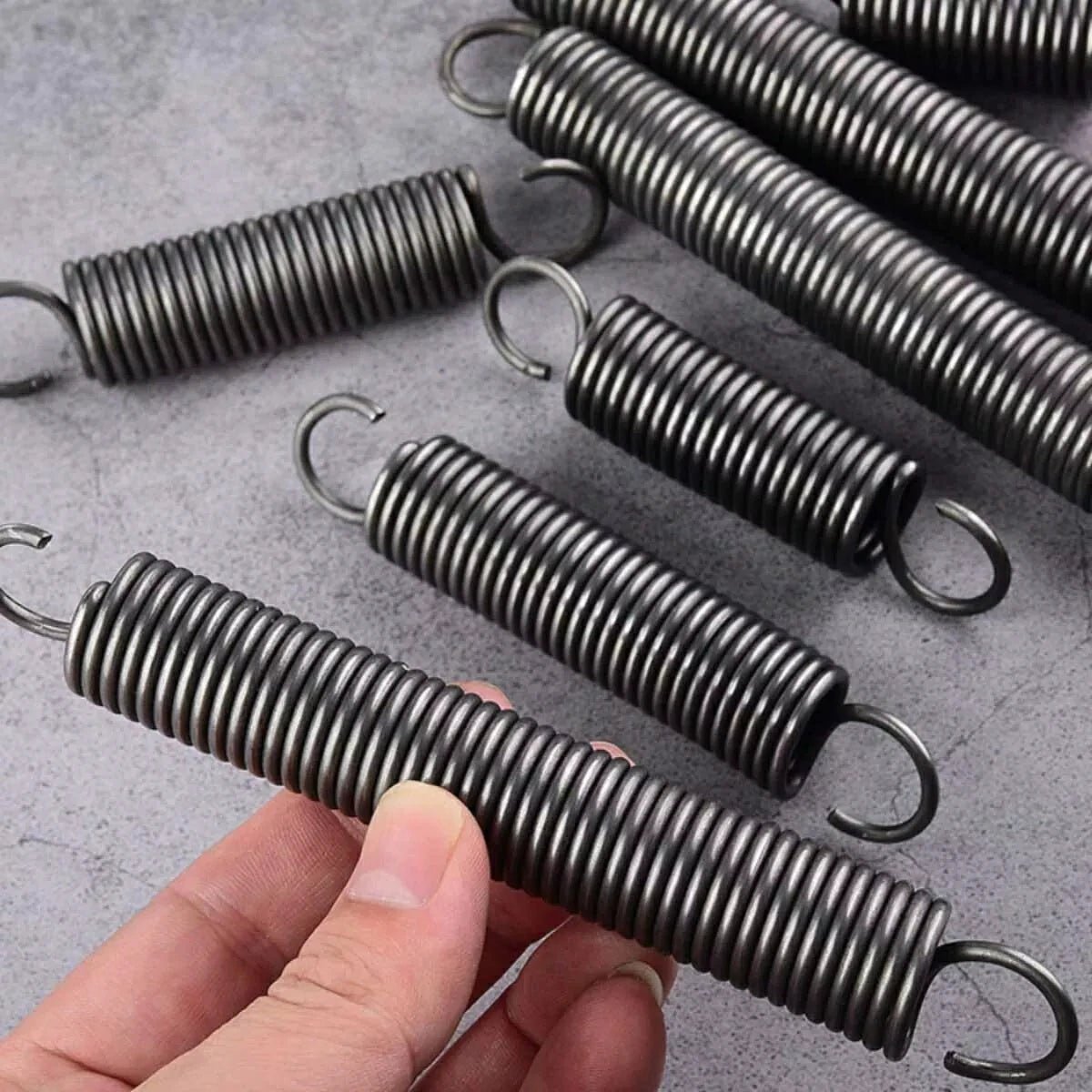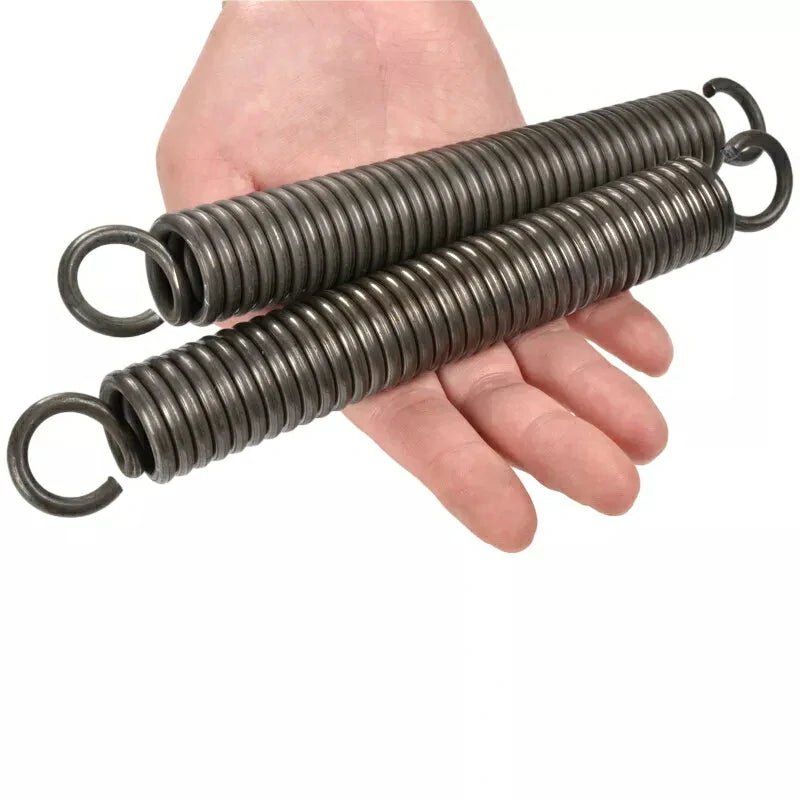1. What Are Compression Springs?
Compression springs are helical coils designed to resist axial pressure, storing energy when compressed and What is a Tension Spring?
A tension spring (or extension spring) is a tightly wound coil designed to absorb and store energy when stretched. When force is applied, the spring extends and returns to its original shape once the force is released. These springs are used in a wide range of applications—from garage doors and lawn mowers to industrial machinery and household items.
Common Uses of Tension Springs
Tension springs are everywhere. Here are some of the most common applications:
- Garage Doors: Tension springs counterbalance the weight of the door, making it easy to open and close.
- Lawn Mowers: They keep the drive belt tight for smooth operation.
- Window Screens: Springs help keep screens taut within frames.
- Sewing Machines: Used in bobbin cases and tension assemblies.
- Recliners: Provide resistance and smooth adjustment.
- Arcade Sticks & Joysticks: Offer responsive tension in gaming controllers.
How to Choose the Right Tension Spring
Selecting the correct spring involves considering:
- Load Capacity: How much weight or force the spring needs to support.
- Length & Diameter: Match the spring size to your application.
- Material: Usually music wire, stainless steel, or oil-tempered spring wire.
- End Type: Looped, hooked, or straight ends based on mounting needs.
At HomeDIYer, we offer a wide selection of tension springs to fit various needs—whether you’re working on a Cub Cadet mower, a John Deere deck, or a garage door repair.
How to Replace a Garage Door Tension Spring
Replacing a broken garage door tension spring can be dangerous. Always use caution and proper tools.
Tools You’ll Need:
- Winding bars
- Adjustable wrench
- Vice grips
- Safety glasses
Steps:
- Disconnect the Opener: Ensure the door is fully closed.
- Release Tension: Carefully unwind the old spring using winding bars.
- Remove Springs: Take out the old springs and hardware.
- Install New Springs: Attach the new springs and wind them evenly.
- Test the Door: Reconnect the opener and test the balance.
⚠️ If you’re unsure, consult a professional. Incorrect installation can lead to injury.
Tension Spring Maintenance Tips
- Lubricate Periodically: Use silicone-based lubricant on spring coils.
- Check for Wear: Look for rust, gaps, or stretching.
- Balance Test: Your garage door should stay in place when lifted halfway.
Why Choose HomeDIYer Tension Springs?
- Durable Construction: Made from high-carbon steel for long-lasting use.
- DIY-Friendly: Perfect for home repair projects.
- Affordable Pricing: Quality doesn’t have to be expensive.
- Free Shipping: On all orders over $50.
Frequently Asked Questions (FAQ)
❓ What is the difference between a torsion spring and a tension spring?
Torsion springs twist to store energy, while tension springs stretch. Torsion springs are often used in garage doors, while tension springs are common in smaller applications like mowers and screens.
❓ Can I reuse a tension spring?
It’s not recommended. Springs lose tension over time and should be replaced for safety.
❓ How do I know what size tension spring I need?
Measure the length, inner diameter, and wire thickness. Check your equipment’s manual or our product guides.
❓ Do you sell tension spring installation tools?
Yes! We offer winding bars, spring pullers, and more.
Shop Tension Springs at HomeDIYer
We carry a wide range of tension springs for:
- Garage doors
- Lawn mowers (Cub Cadet, John Deere, Husqvarna)
- Window screens
- Recliners
- Sewing machines
- And more!
Browse our collection today and get the right spring delivered fast.
Final Thoughts
Whether you’re a seasoned DIYer or just getting started, having the right tension spring on hand can save you time and money. At HomeDIYer, we’re committed to providing top-quality parts and the knowledge you need to install them with confidence.
Thanks for trusting HomeDIYer for your home repair needs.leasing it when the load is removed. These springs are widely used in automotive suspensions, industrial machinery, and even household appliances. Key types include:
- Standard Compression Springs: Ideal for general applications (e.g., “compression springs by size”).
- Heavy-Duty Springs: Built for high-stress environments (search term: “heavy duty compression springs”).
- Stainless Steel Springs: Corrosion-resistant for outdoor or humid conditions (“stainless steel compression springs”).
Why Choose HomeDIYer? Our springs undergo rigorous testing (see “compression spring testing machine”) to ensure longevity and performance.
2. How to Choose the Right Compression Spring
Selecting the perfect spring depends on three factors:
- Material: Stainless steel offers rust resistance, while carbon steel suits heavy loads.
- Size: Match inner/outer diameters and free length to your project (use a “compression spring calculator” for precision).
- Load Capacity: Calculate maximum force using the “compression spring formula” (F = kx).
Pro Tip: For specialized needs like “valve spring compression tools” or “coil spring compressors,” check our step-by-step buying guides.
3. Step-by-Step Guide: How to Compress Springs Safely
Compressing springs requires caution. Follow these steps with a spring compression tool:
- Secure the Spring: Use a vise or clamp to prevent slippage.
- Attach the Tool: Align the compressor arms evenly (critical for “strut spring compression”).
- Apply Pressure Gradually: Avoid sudden force to prevent injury.
- Inspect After Compression: Check for deformities or stress marks.
Warning: Never attempt “how to compress coil springs without a tool” – improper methods risk damage or accidents.
4. Understanding Compression Spring Formulas
Physics governs spring behavior. Key equations include:
- Hooke’s Law: F = kx (force = spring constant × displacement).
- Energy Storage: The “energy in a compressed spring” is E = 0.5kx².
- Maximum Compression: Use “how to find maximum compression of a spring” guides to avoid overloading.
Example: Solving a “conservation of energy problem with spring compressed” involves calculating potential energy transfer.
5. Top Applications of Compression Springs
From cars to robotics, compression springs power countless systems:
- Automotive: Strut assemblies (“how to compress springs on struts”) and clutch mechanisms.
- Industrial: Valves, presses, and conveyor systems (“compression spring suppliers”).
- DIY Projects: Custom furniture, 3D printers, and toolkits (“small compression springs”).
Case Study: A customer used our “compression springs for sale” to rebuild a vintage motorcycle suspension – watch the video tutorial!
6. Where to Buy Quality Compression Springs
HomeDIYer stands out for:
- Custom Orders: Need a “30mm compression spring” or “conical compression springs”? We craft to spec.
- Competitive Pricing: Save vs. retailers like “compression springs Home Depot” or “Lowes.”
- Fast Shipping: Free delivery on orders over $50.
Compare: While “spring compression tool rental” is an option, owning tools ensures long-term savings.
FAQs
Q: How do I calculate spring rate?
A: Use our “compression spring calculator” or the formula k = Gd⁴/(8D³N), where G = material modulus.
Q: What’s the difference between compression vs extension springs?
A: Compression springs resist pushing forces, while extension springs handle pulling (learn more in “compression vs extension spring” guides).
Q: Can I reuse a compressed spring?
A: Yes, unless it’s deformed or part of a “heavy-duty” application with cyclic loads.
Why Trust HomeDIYer?
With 15+ years in spring manufacturing, we combine expertise (“compression spring manufacturers”) with a passion for DIY innovation. Our blog covers everything from “how to compress suspension springs” to advanced “compression spring equations.”
Ready to Order? Browse our catalog of “compression springs near me” or contact us for custom quotes!

